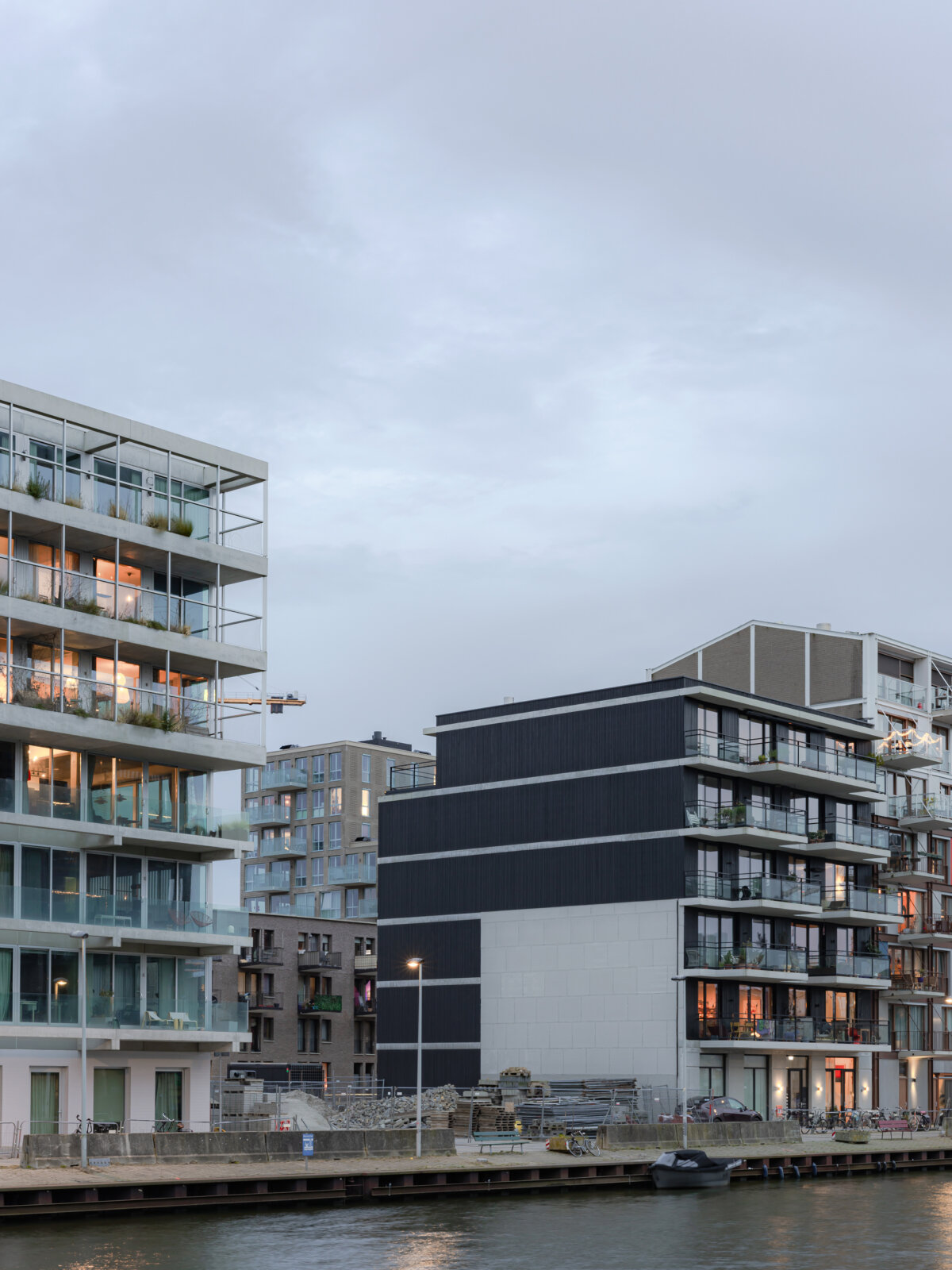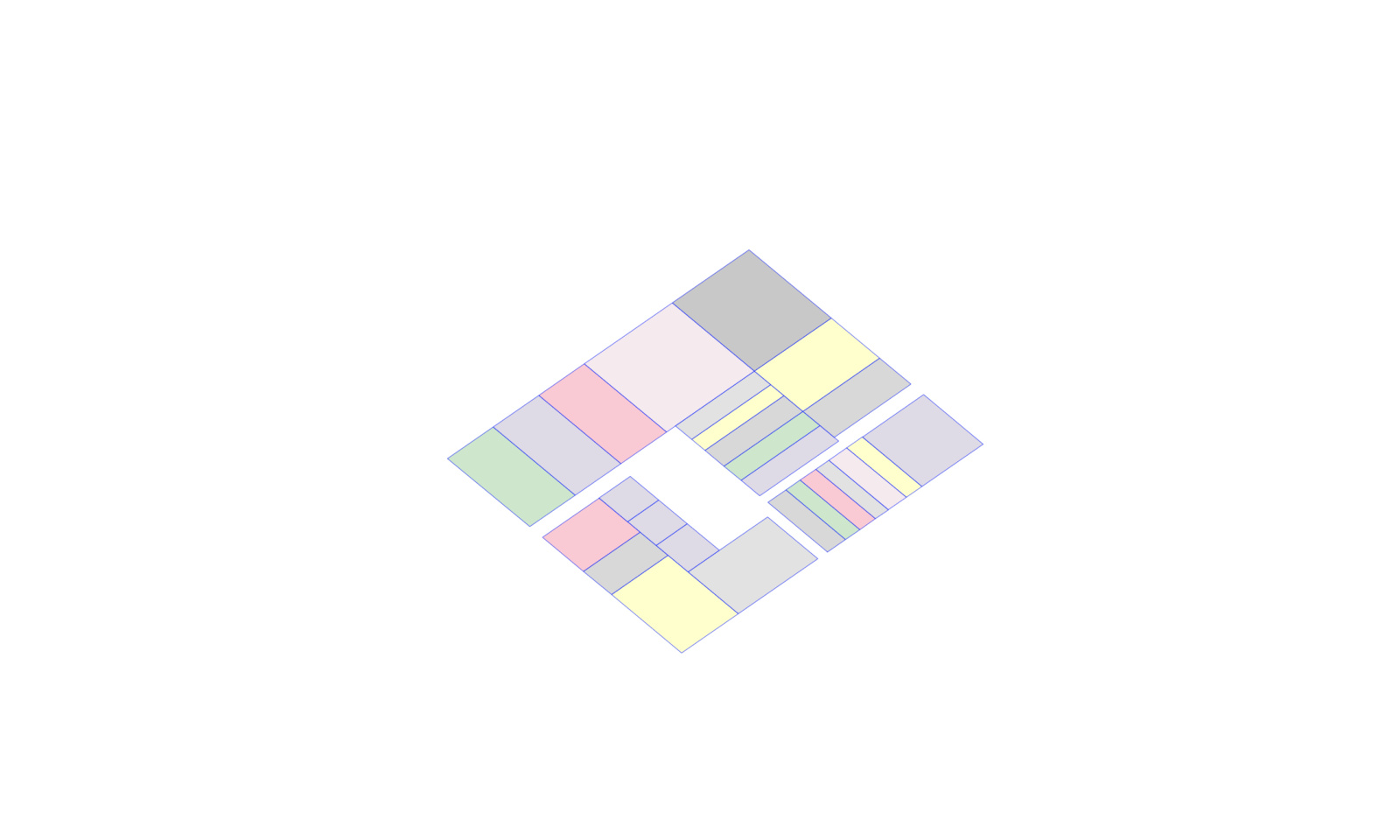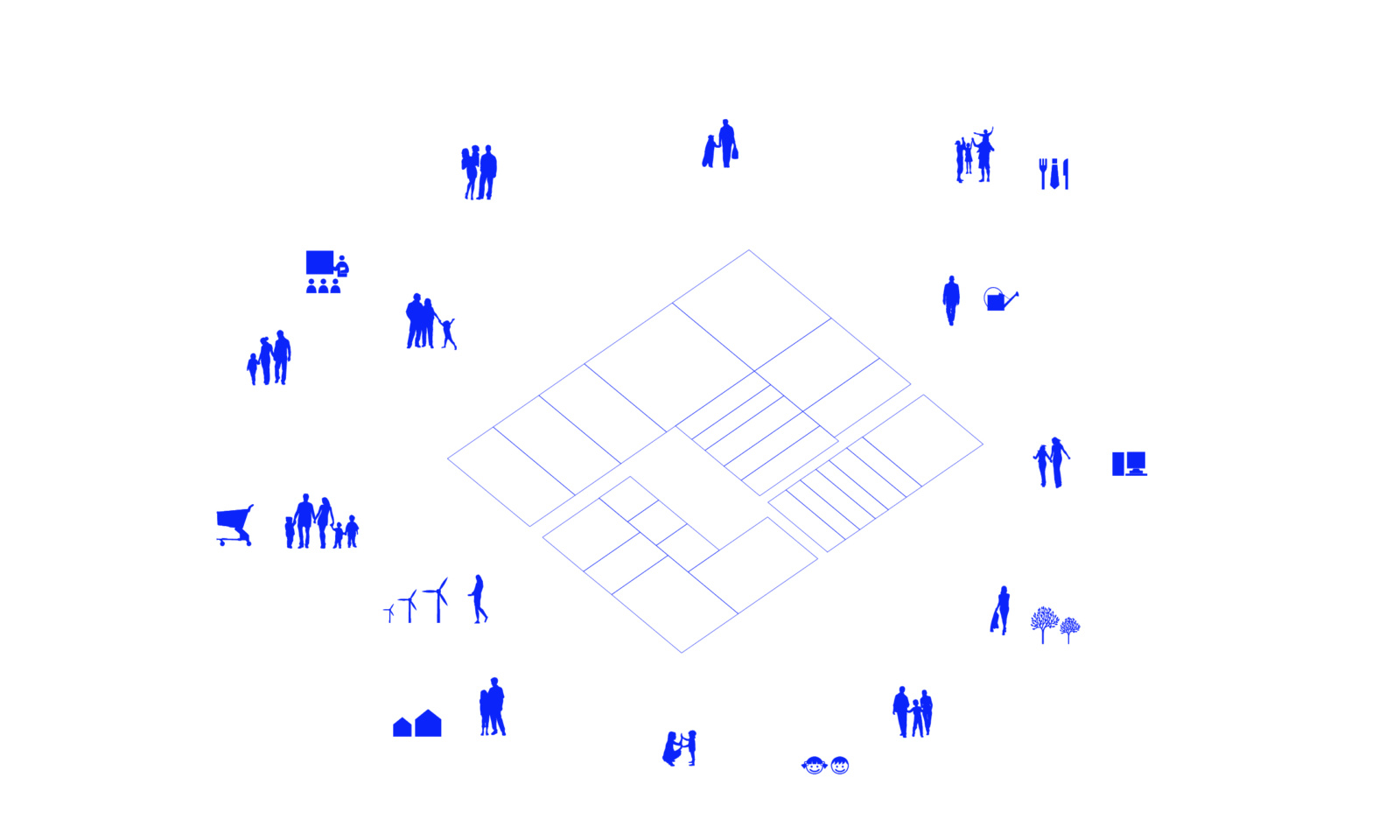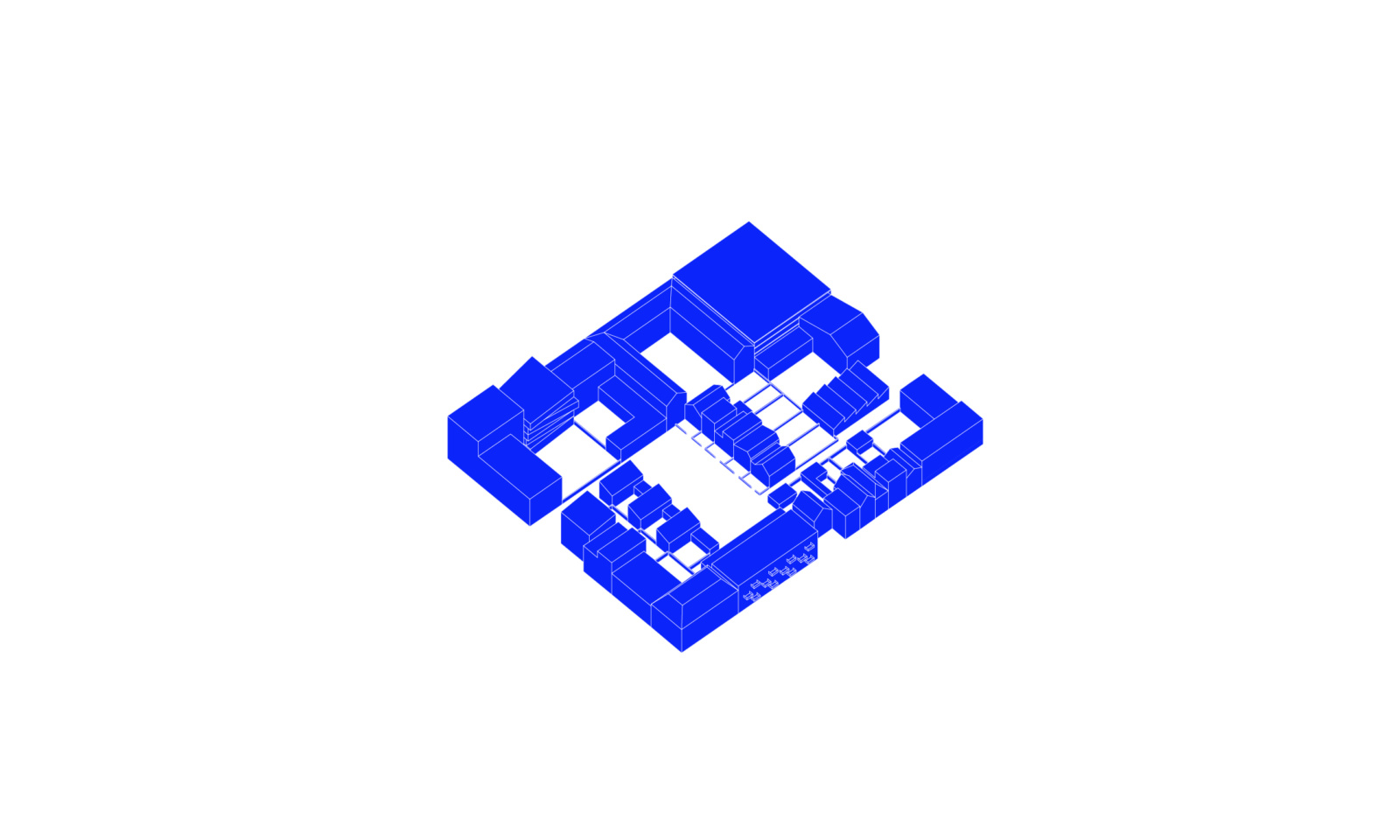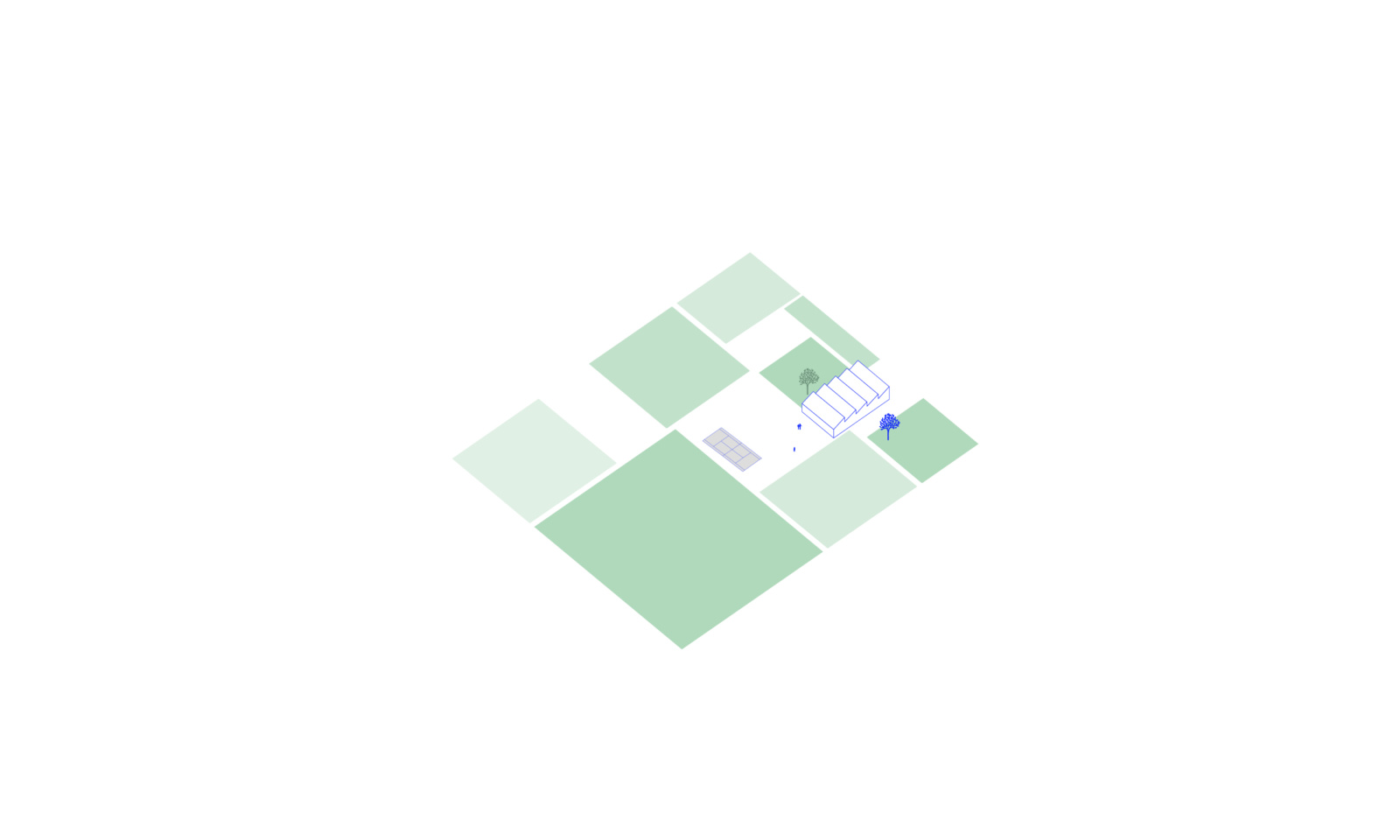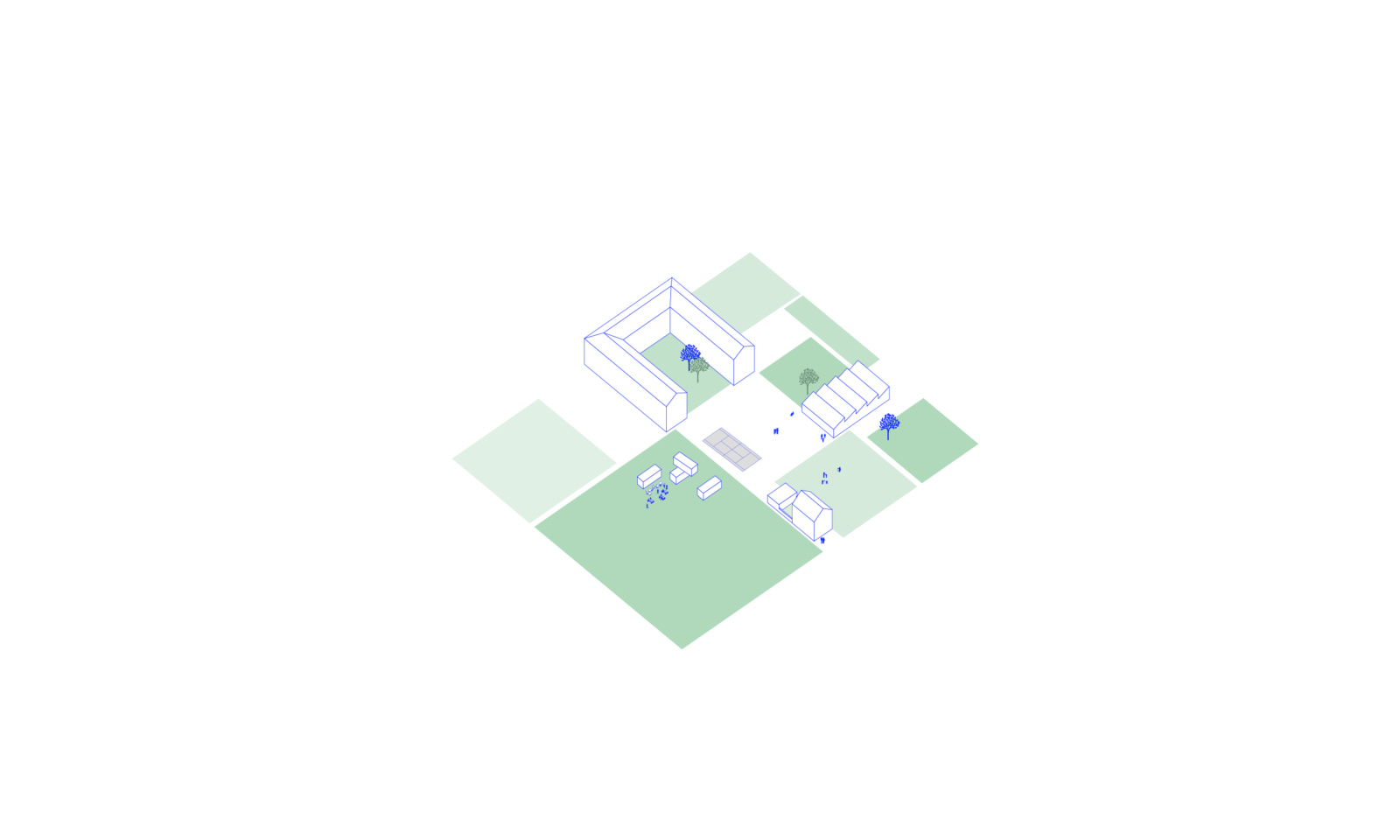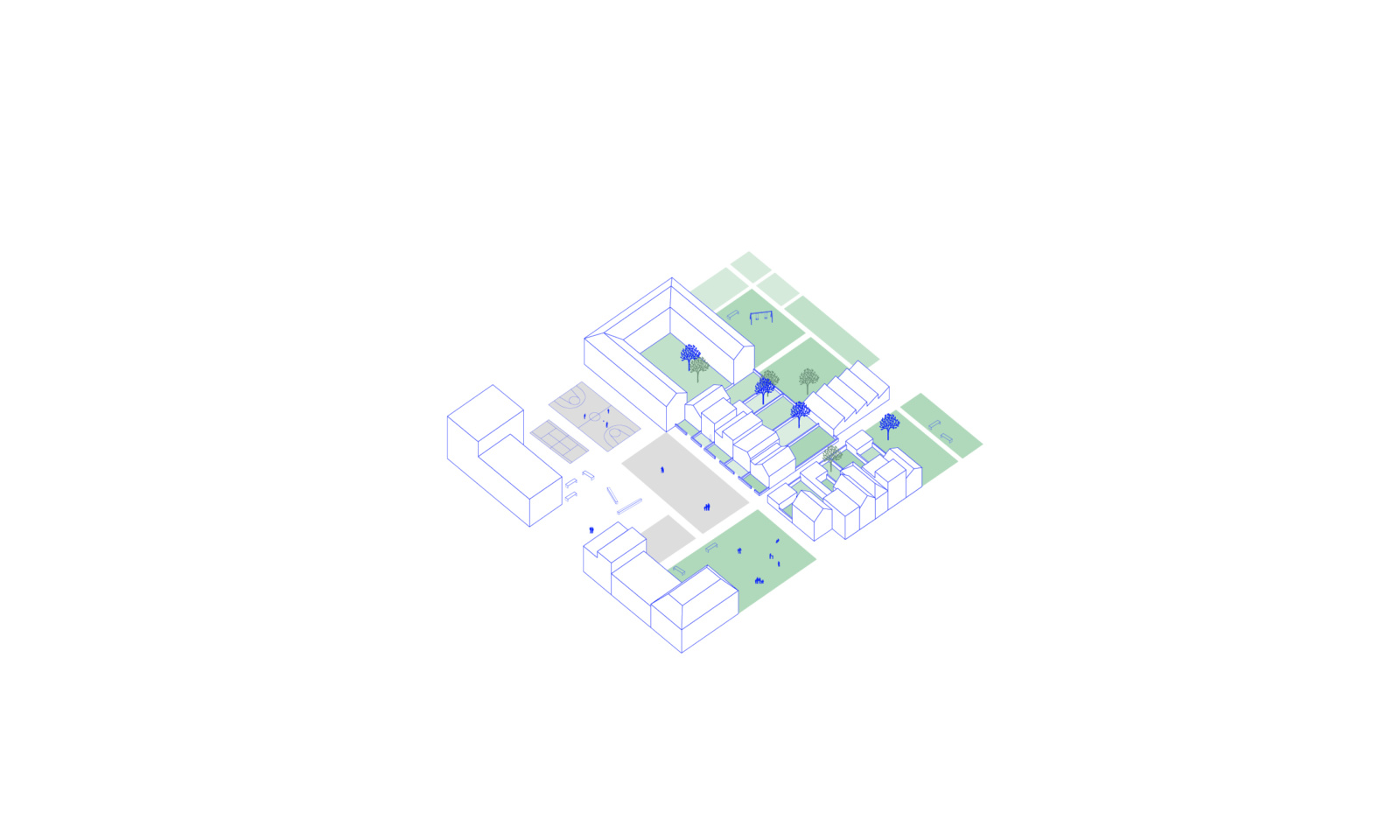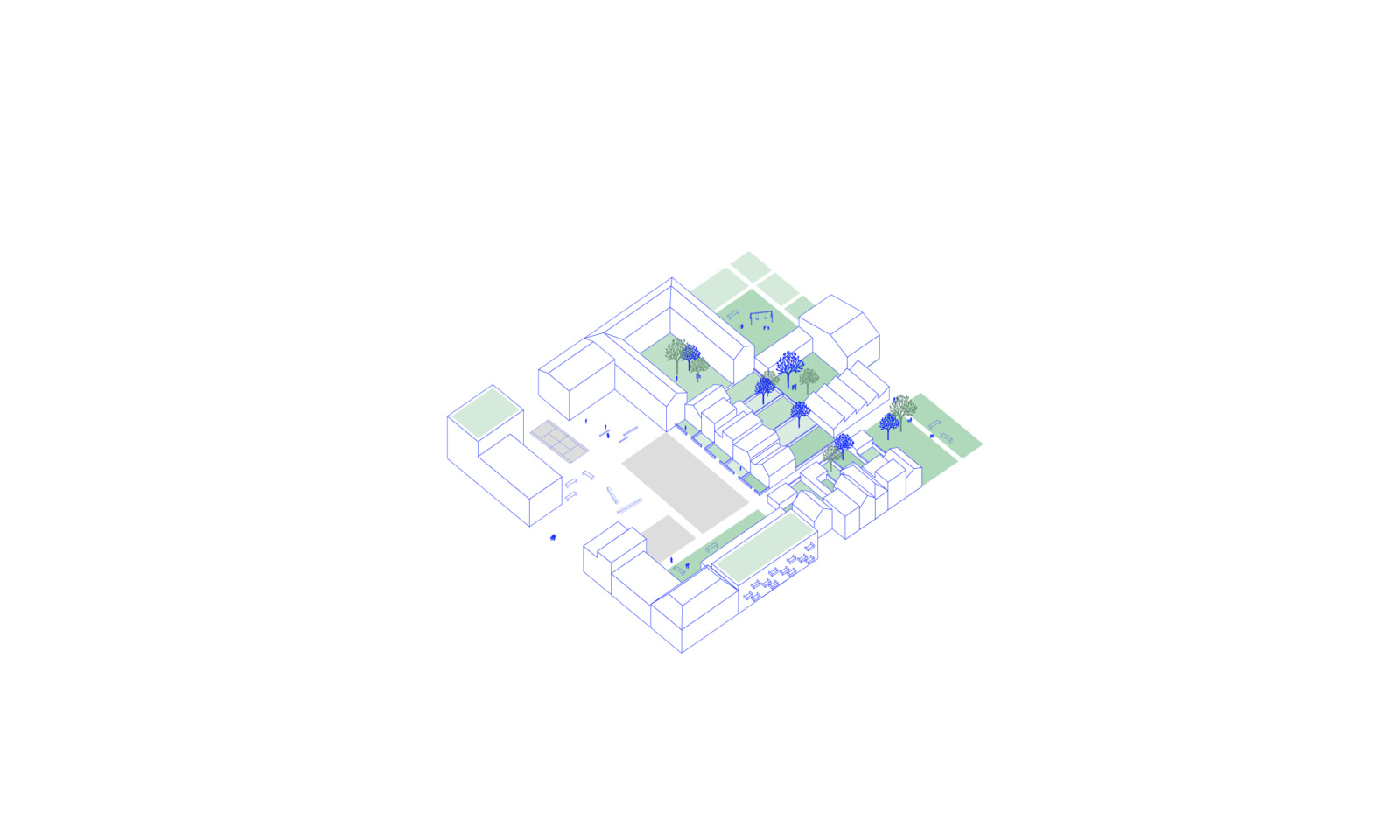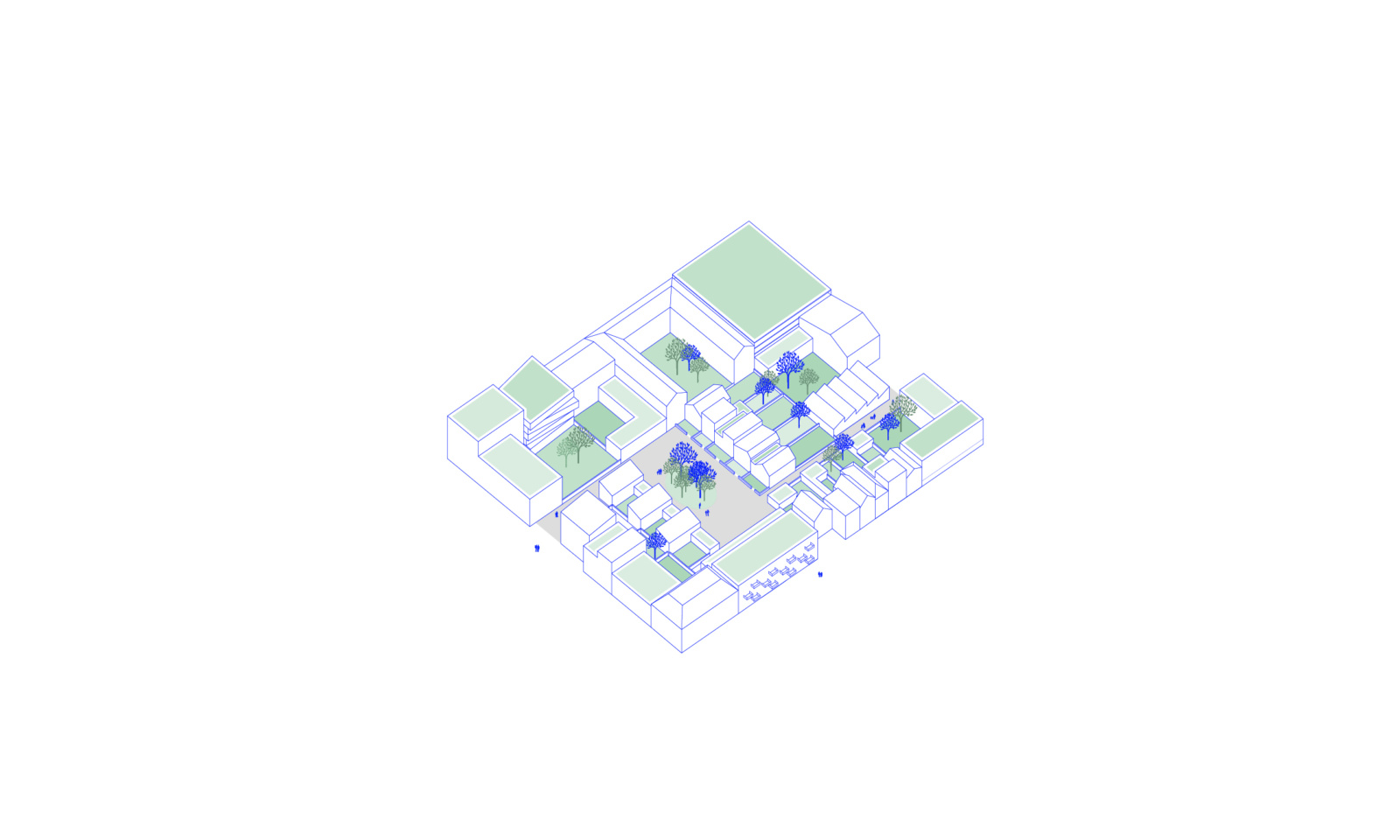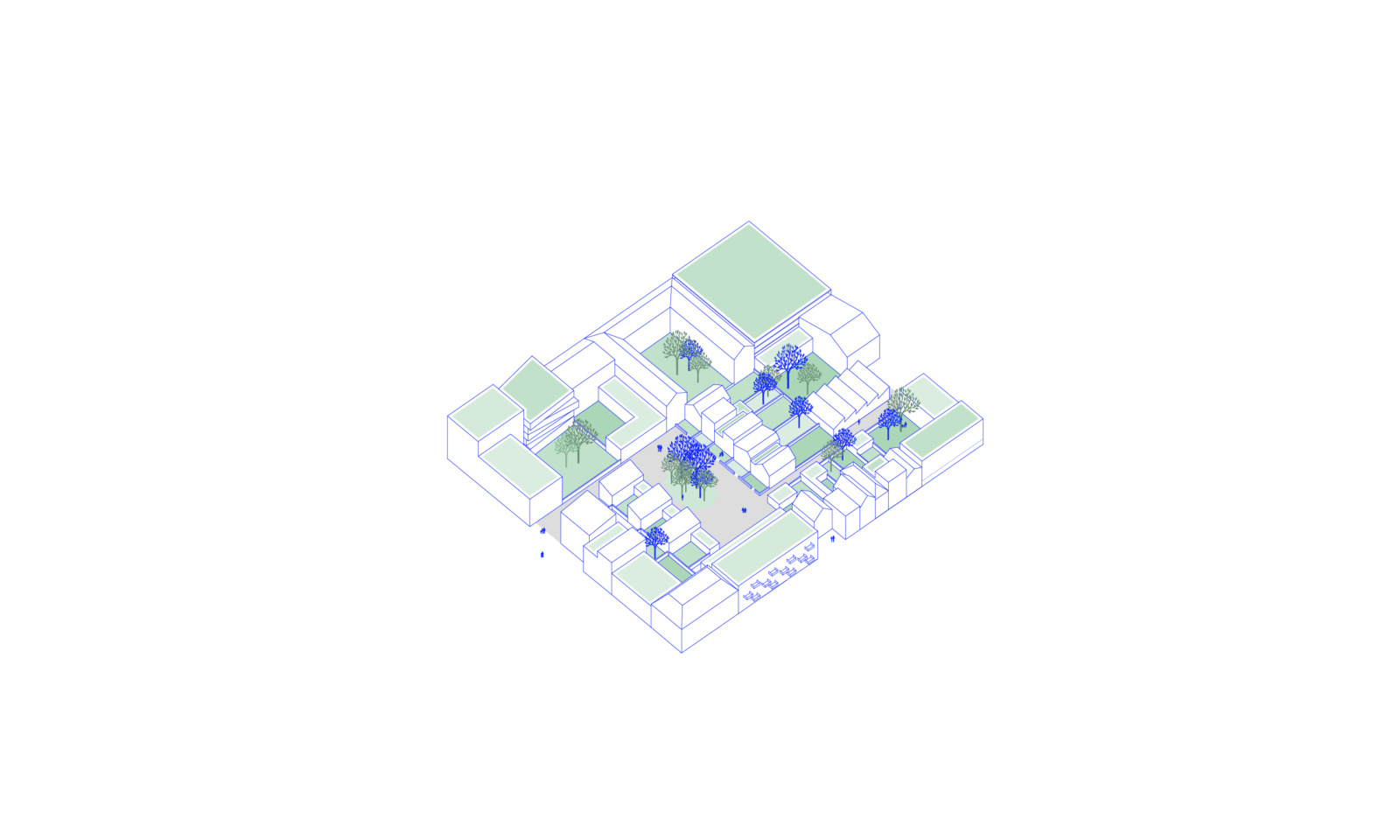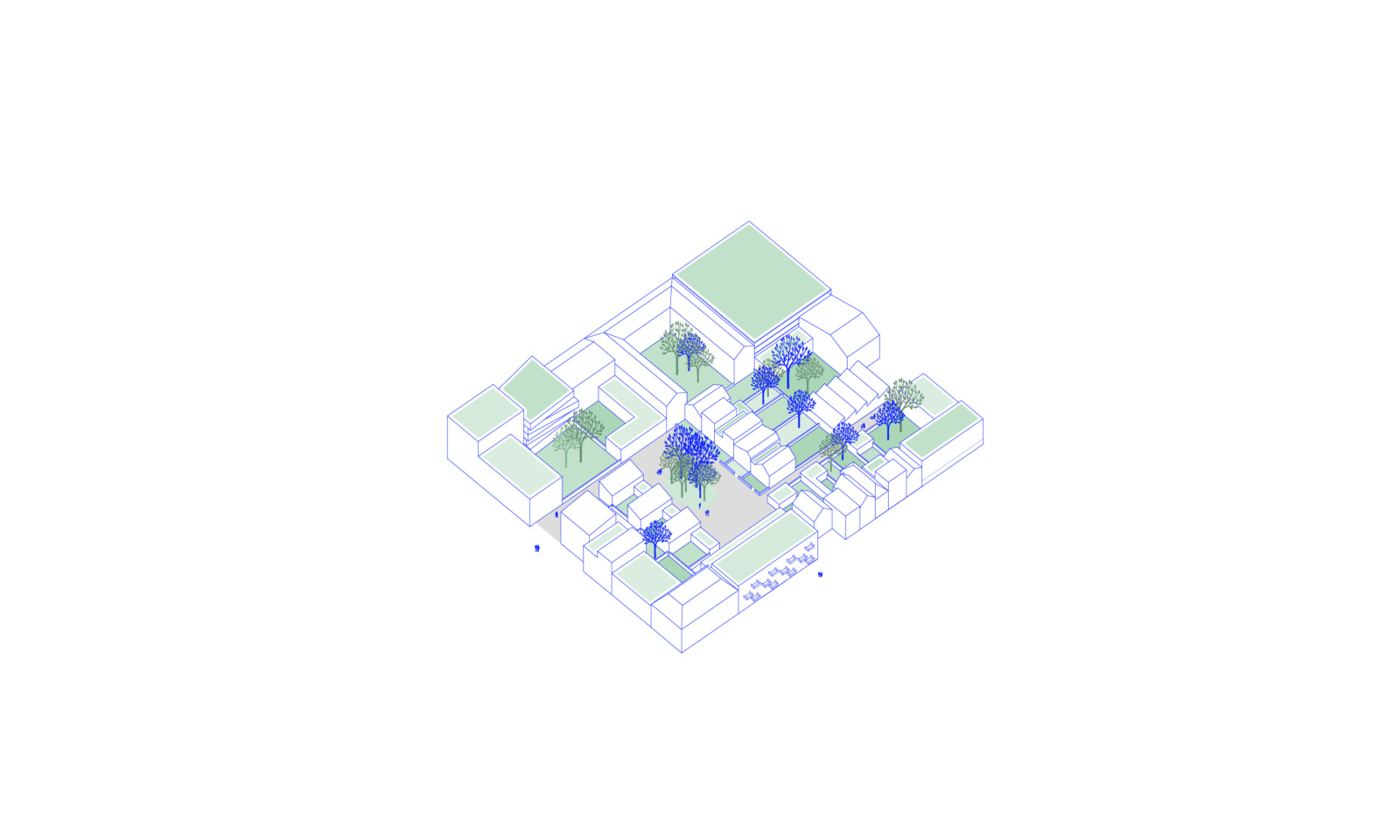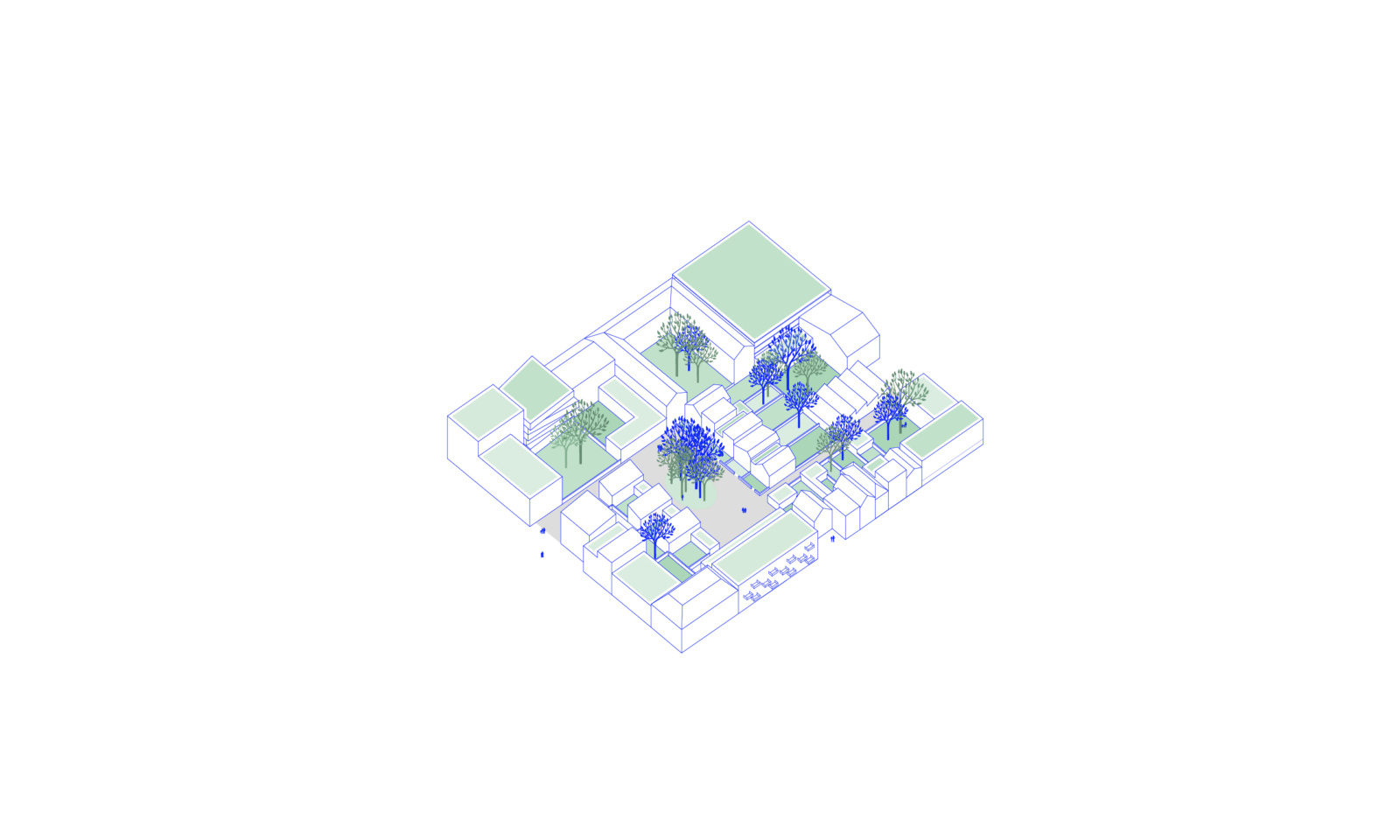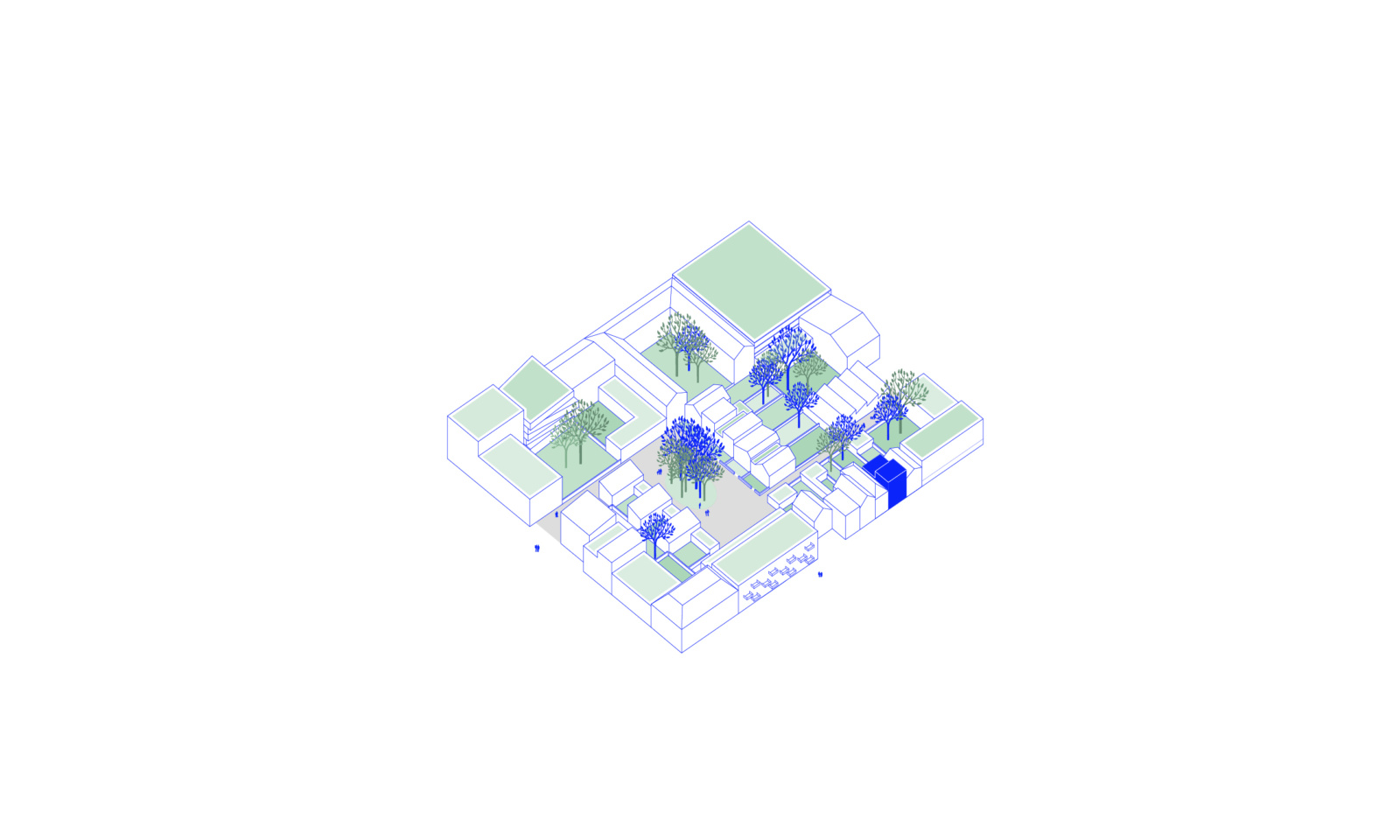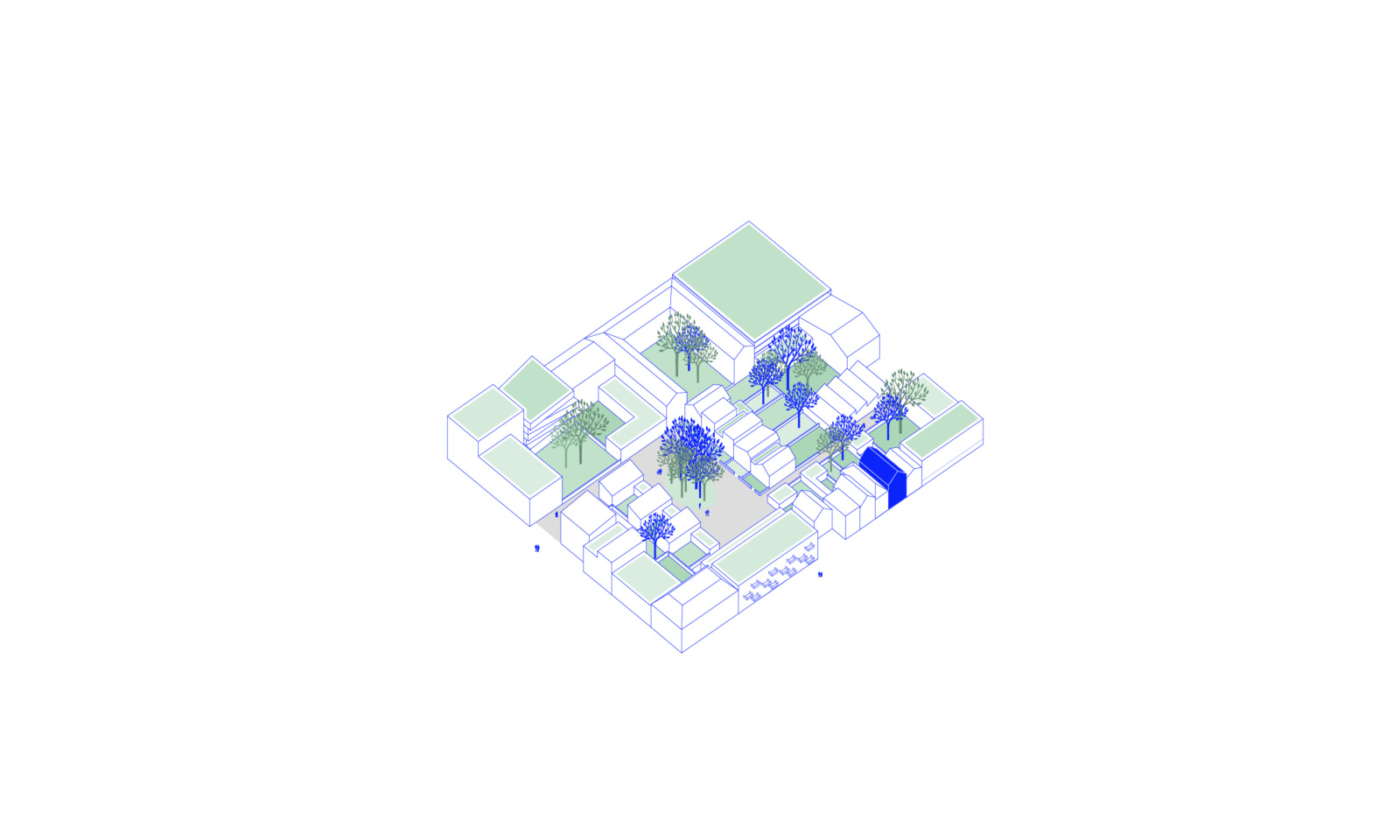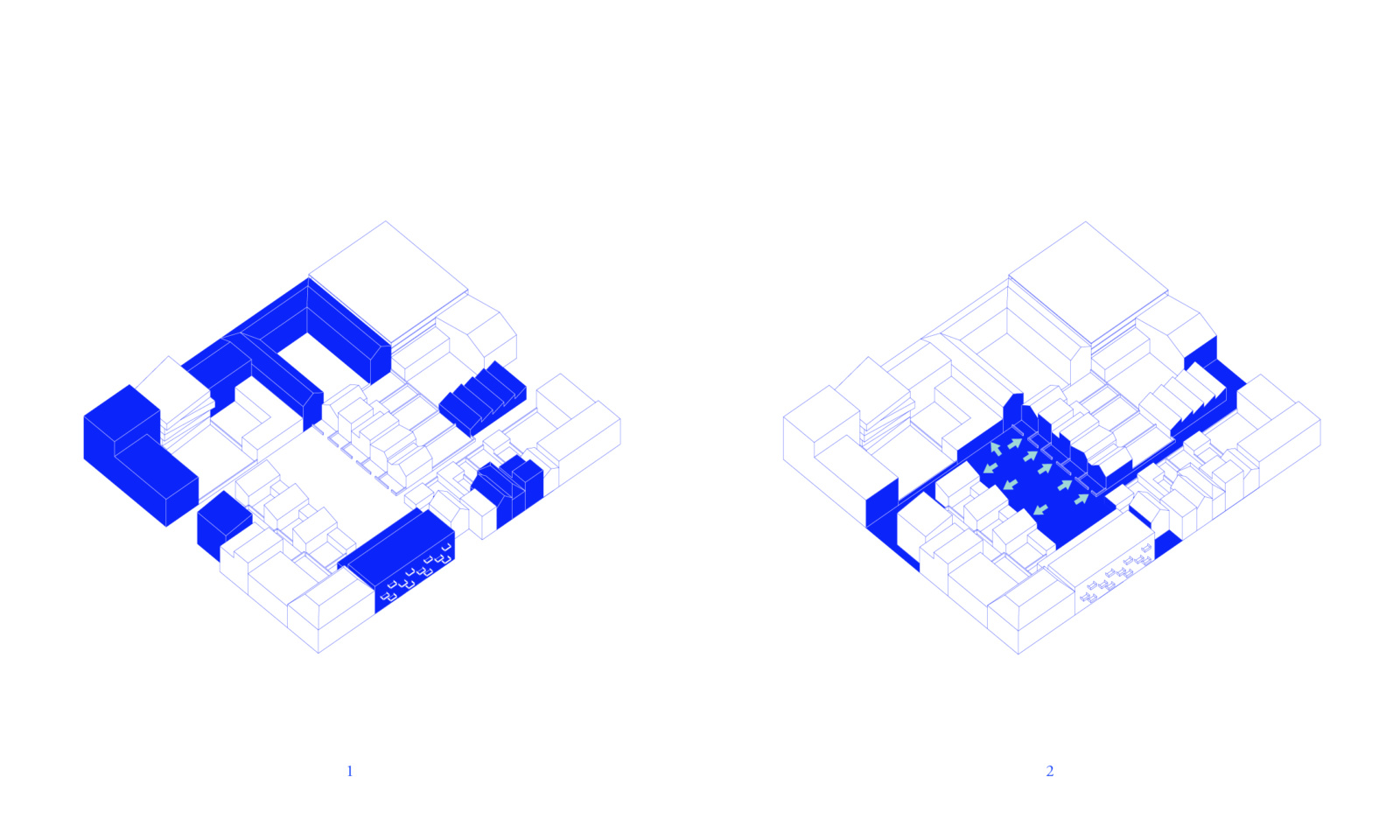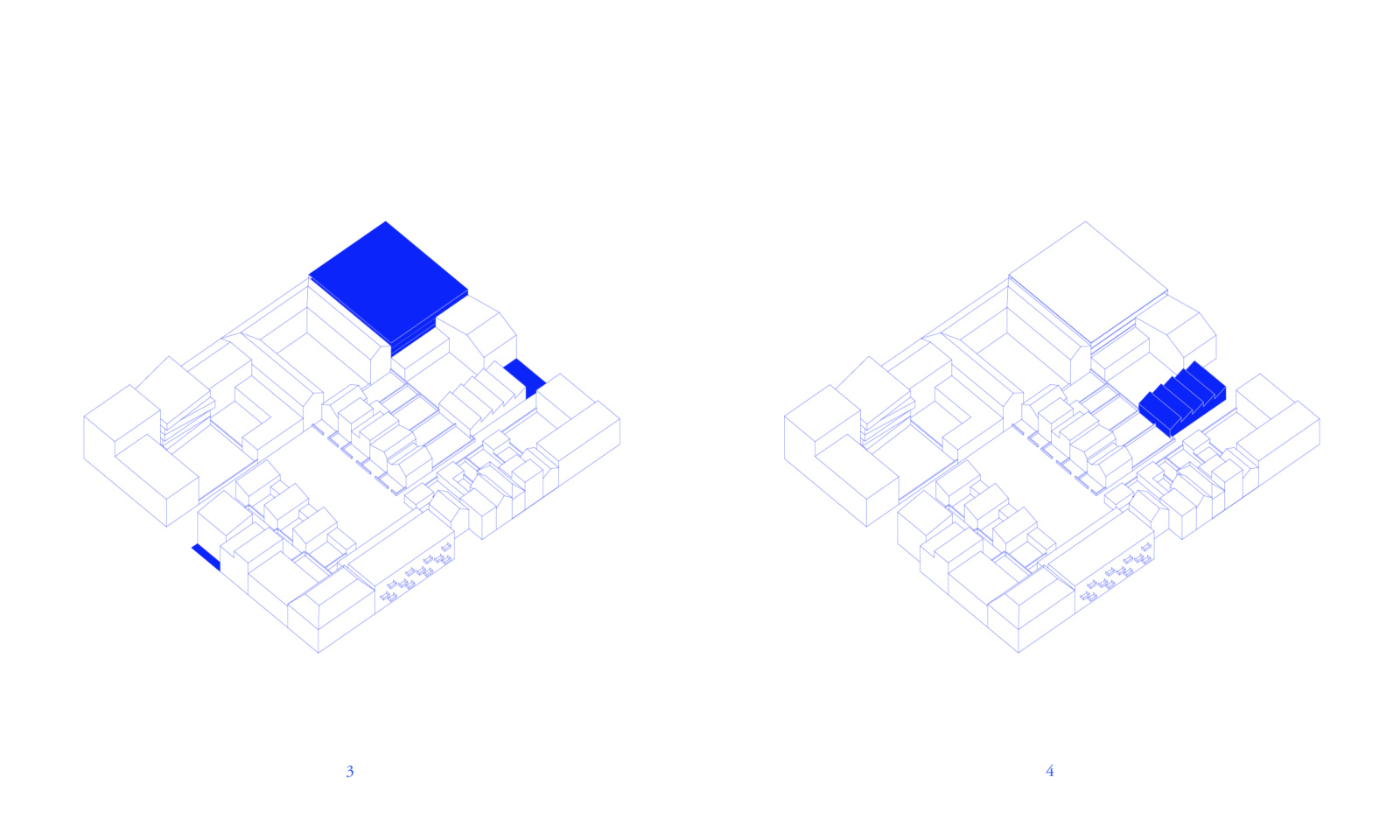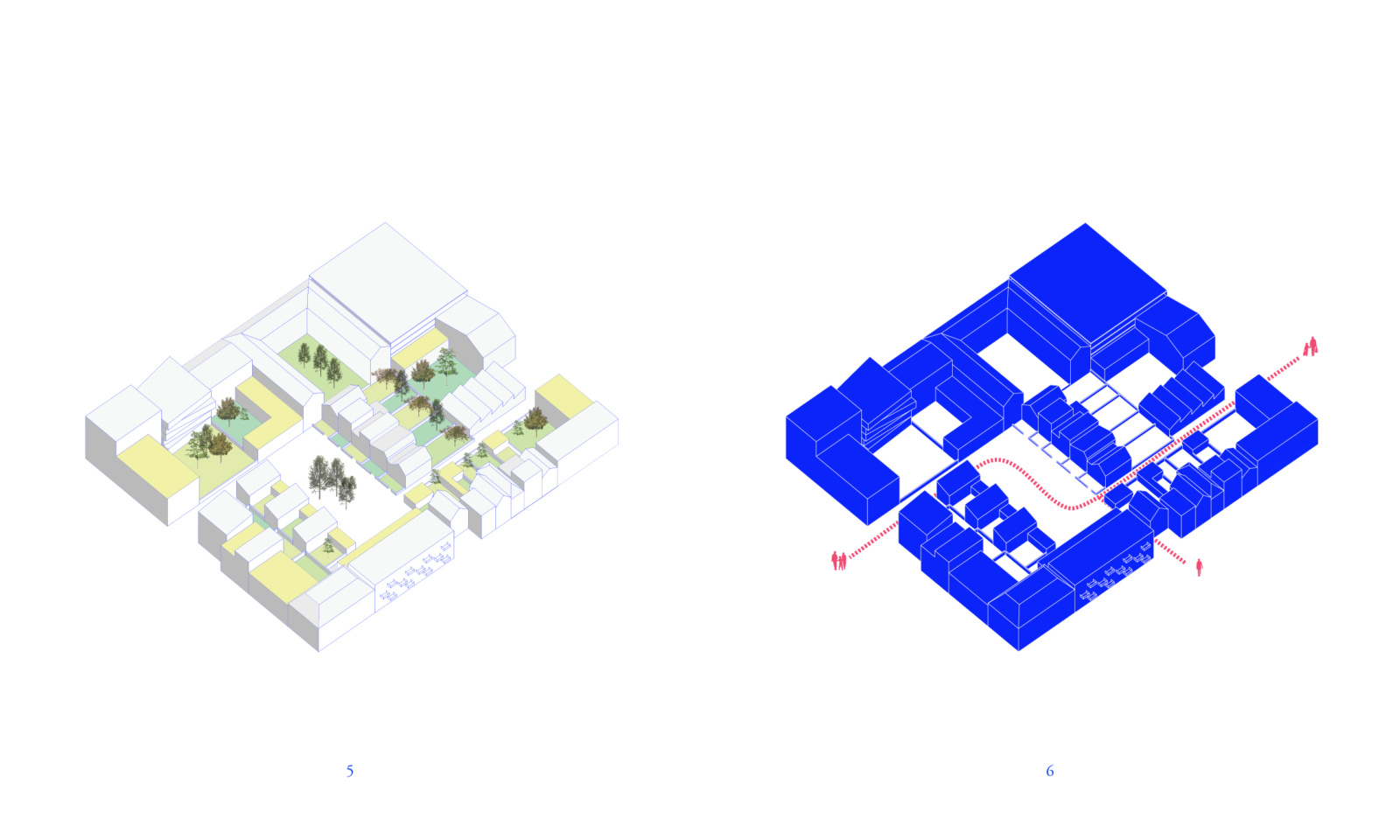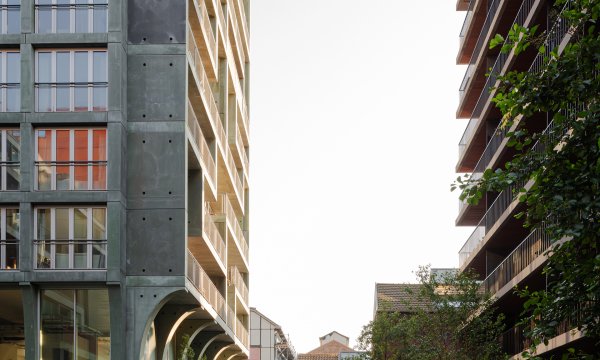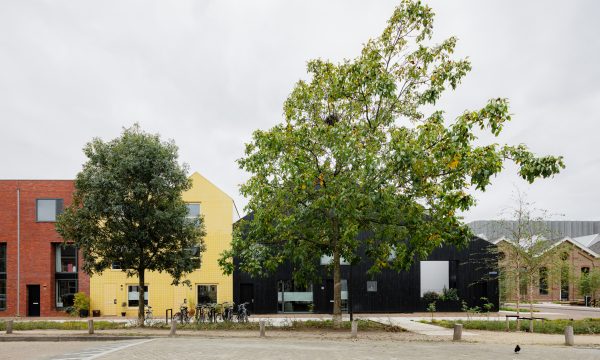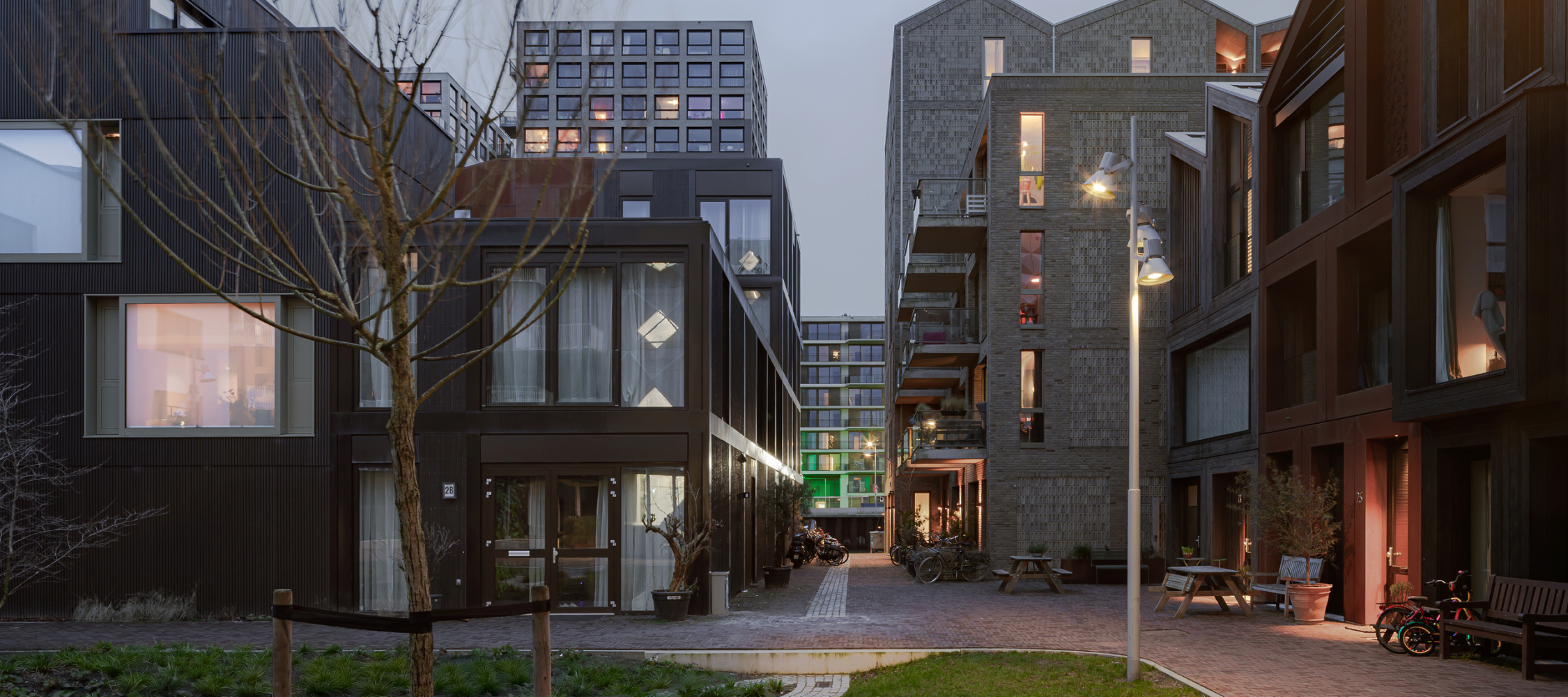

Cityplot Buiksloterham
In Amsterdam’s Buiksloterham, a former industrial harbour is converting into a circular, mixed-use urban district. Designed in collaboration with DELVA, we introduce Cityplot Buiksloterham — one, pioneering approach to urban, landscape, and social regeneration.
Initiated during the last global crisis, Cityplot Buiksloterham is an innovating kind of urban planning. Instead of adopting a rigid top-down master plan, we focused on a flexible, collaborative way of thinking, aiming for a resilient urban system that can constantly adapt to the shifting needs and desires of the community.
Project details
Client
de Alliantie, SynchroonType
Urban plan; 63.000 m2 (GFA), 29.000 m2 (plot size)Location
Distelweg, Buiksloterham, Amsterdam, NLDesign-Completion
2013-ongoingPartners
DELVA Landscape Architecture | UrbanismDesign team
Albert Herder, Vincent van der Klei, Metin van Zijl, Arie van der Neut, Ruben Visser, Karlijn de Jong, Monika Pieroth, Renske Backes, Lesia Toplonyk, Joost MaatkampImage credits
Sebastian van Damme, StudioninedotsArchitects involved
Civic Architects, DAMAST architects, Harvey Otten, OZ Architects, Space Encounters, Studioninedots, WE architecten, XOOMlab, XVW architectuur, self-build projects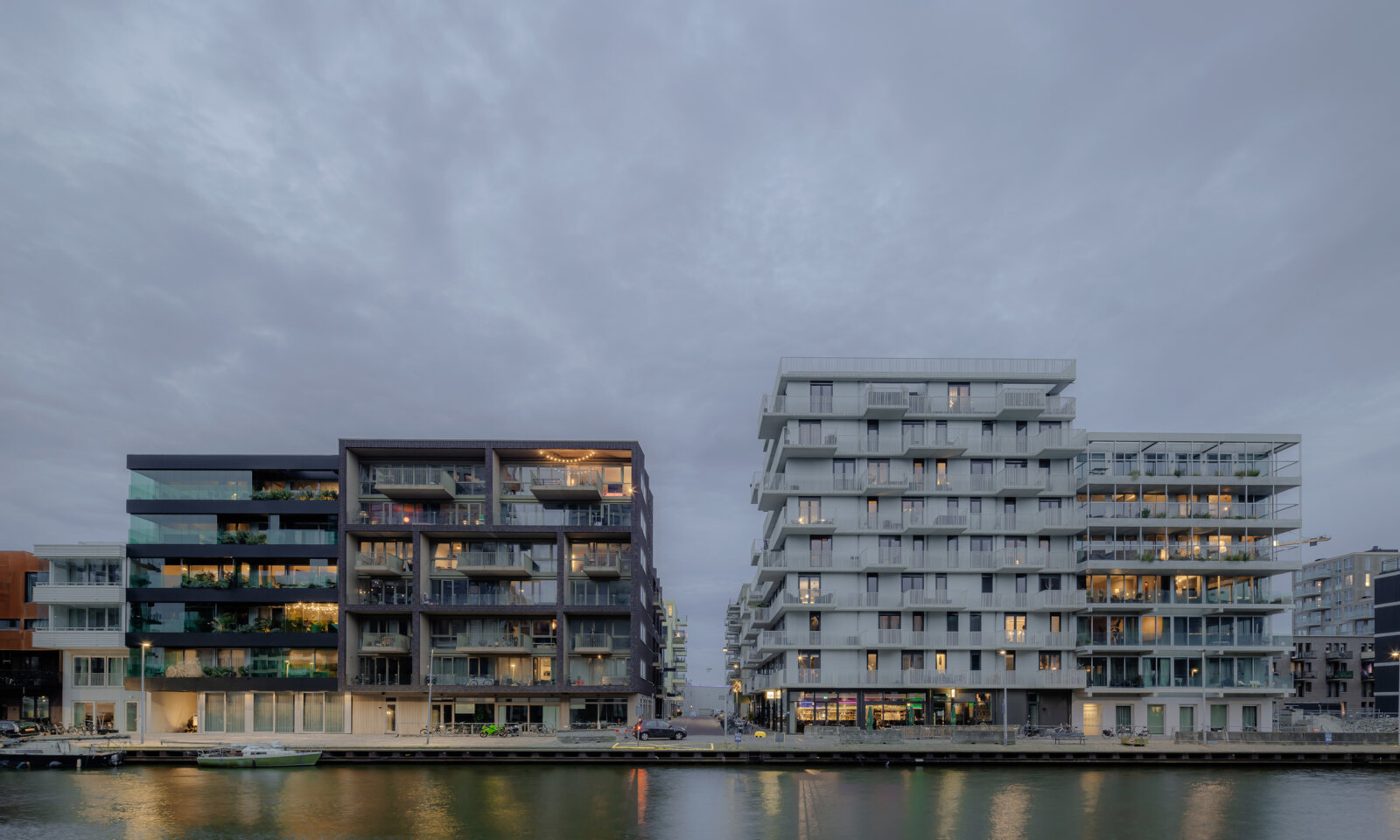
Today, this revitalisation of the former Nedcoat and Air Products sites is rapidly taking shape, with 550 new homes and 4,000m² of workspaces, hospitality and public functions. What began as an experimental vision is now a thriving urban district where social and technological innovations meet.
One, pioneering approach to urban, landscape, and social regeneration.
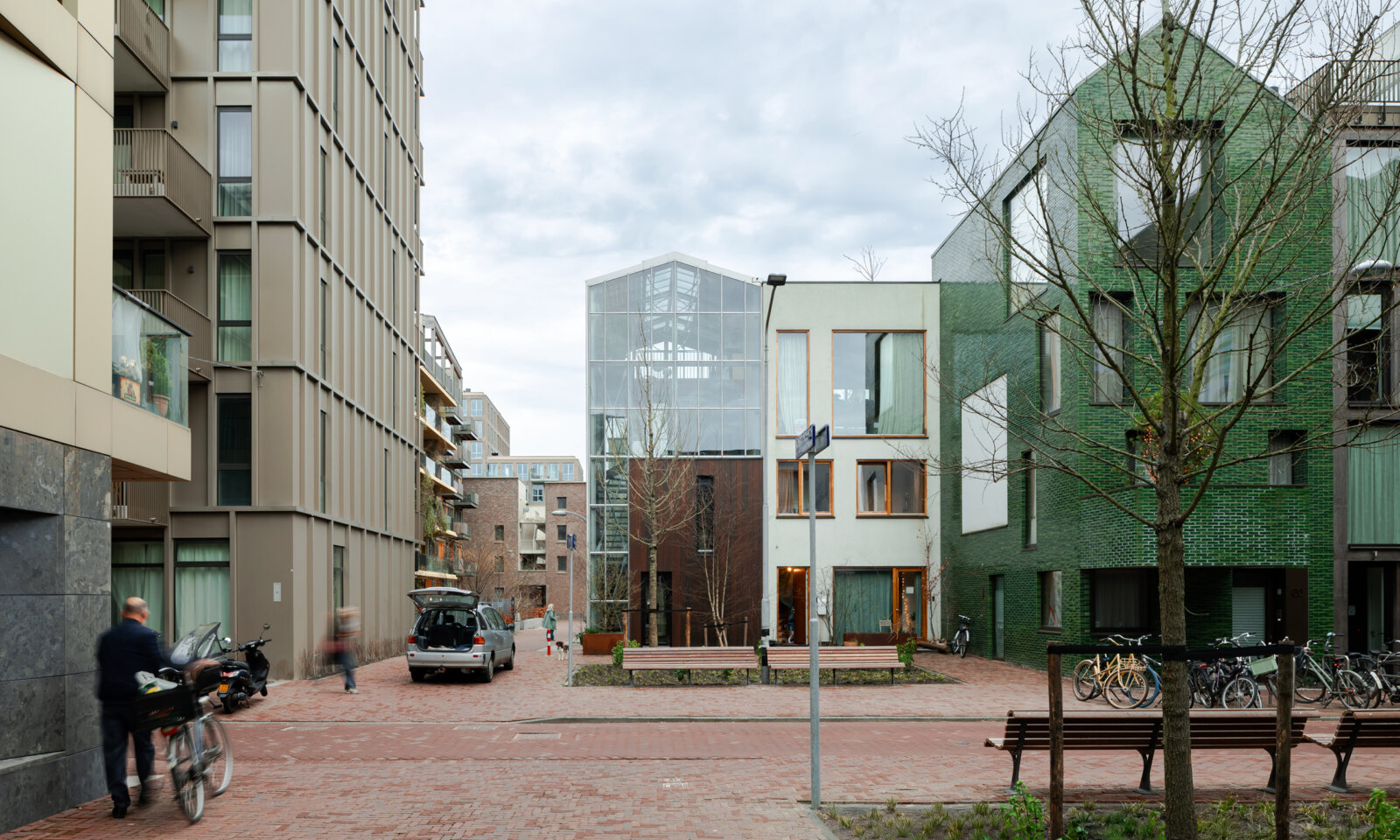
Diversity: designing smaller-scale plots, yet with a great variety of typologies, we bring individuals, collectives, businesses, investors and developers together to create a more collaborative setting.
Rather than building larger, fixed urban blocks, we committed to a different course of action: creating smaller-scale plots, yet with a great variety of typologies. Work/housing units are radically intermixed with social housing, self-build projects and social hubs. With this approach, we bring individuals, collectives, businesses, investors and developers together to create a more collaborative setting.
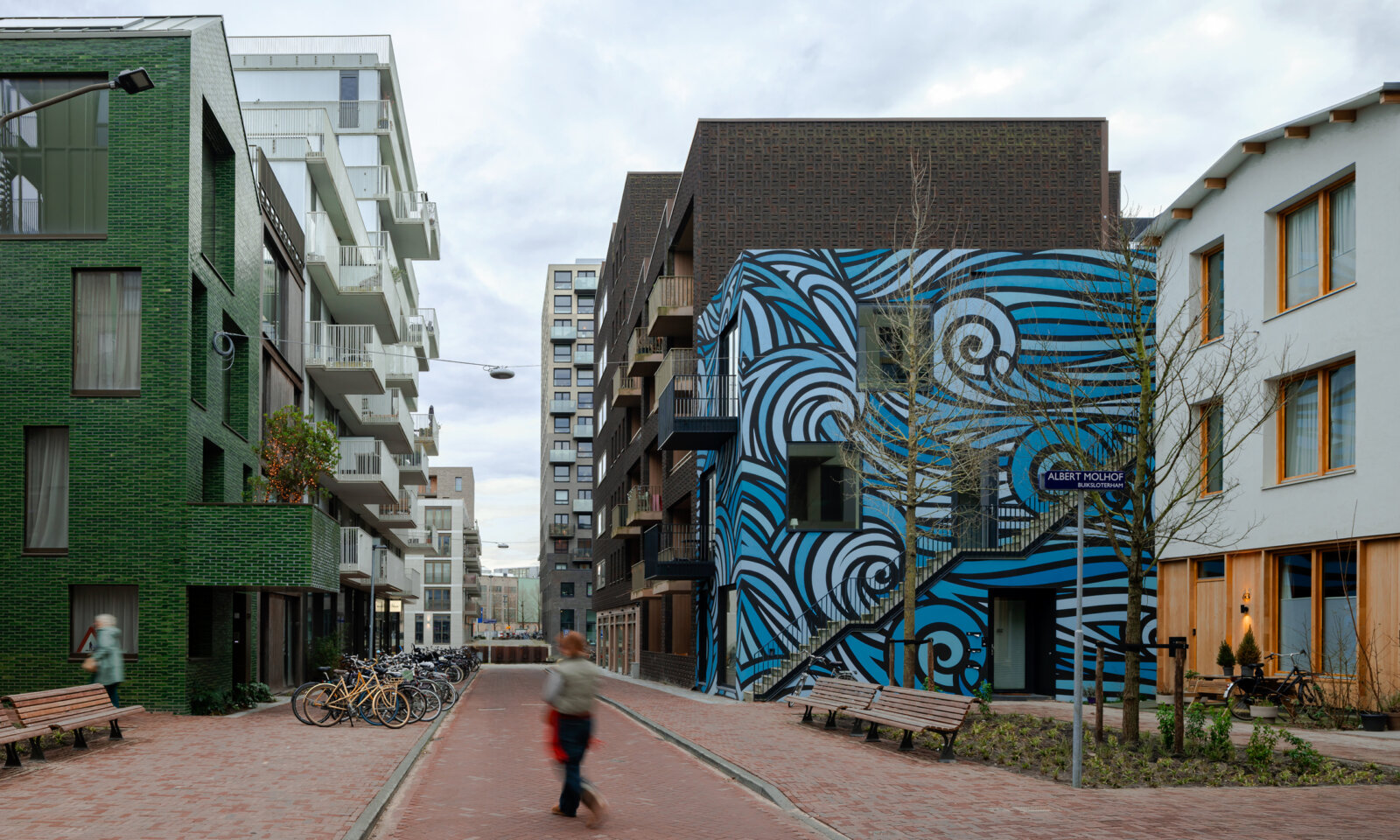
A city-wide variety of functions and experiences is compressed into an intensive Cityplot.
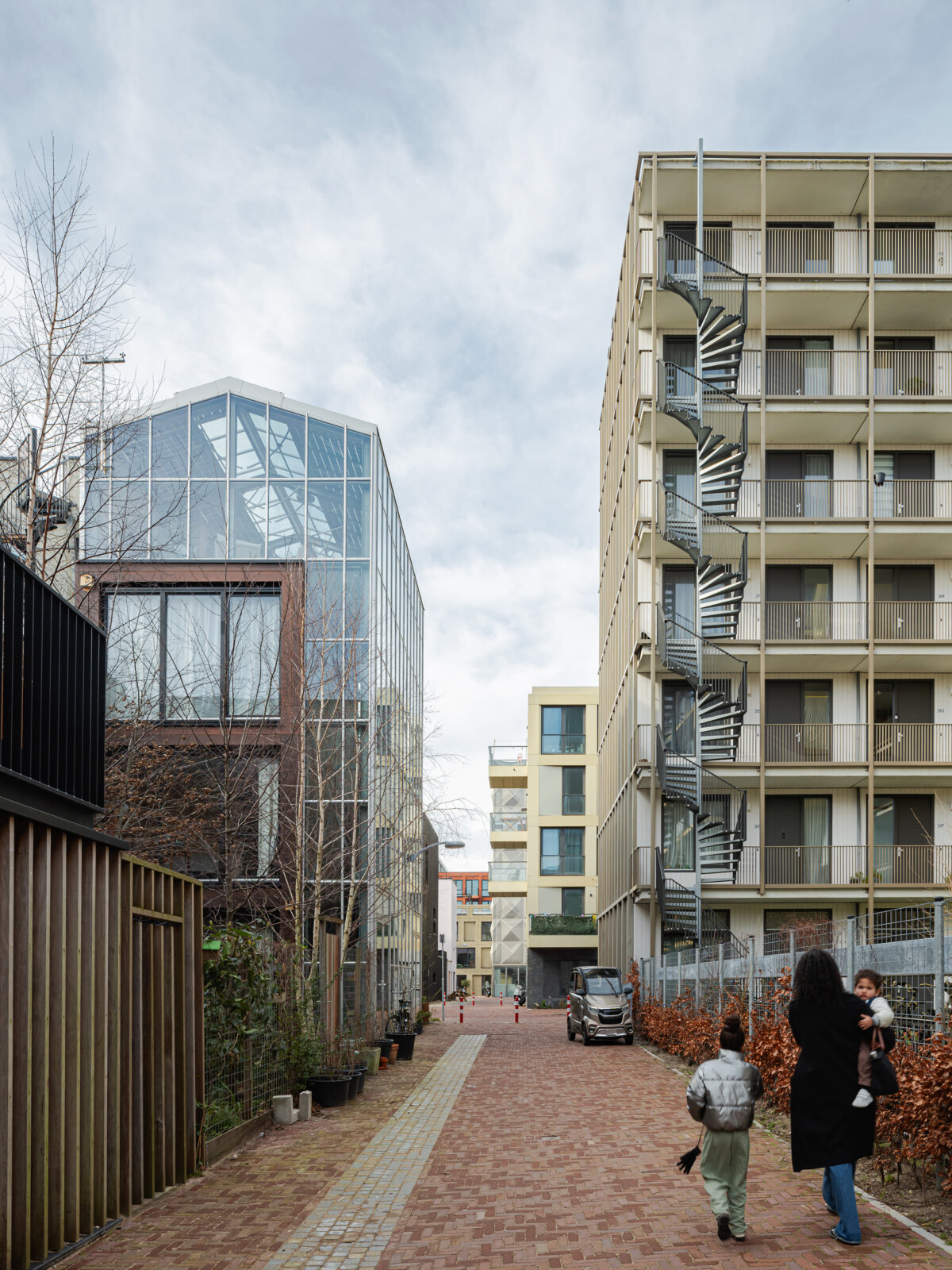

The plan builds a durable community through ‘urban activators’ — dedicated spaces for initiatives by local entrepreneurs and makers. Drawing on their local value, these initiatives reinforce the district, attract young entrepreneurs and contribute to the community. A new activator, a community room at the heart of the plan, is currently being added and will be available for the neighbourhood to use for their own activities.
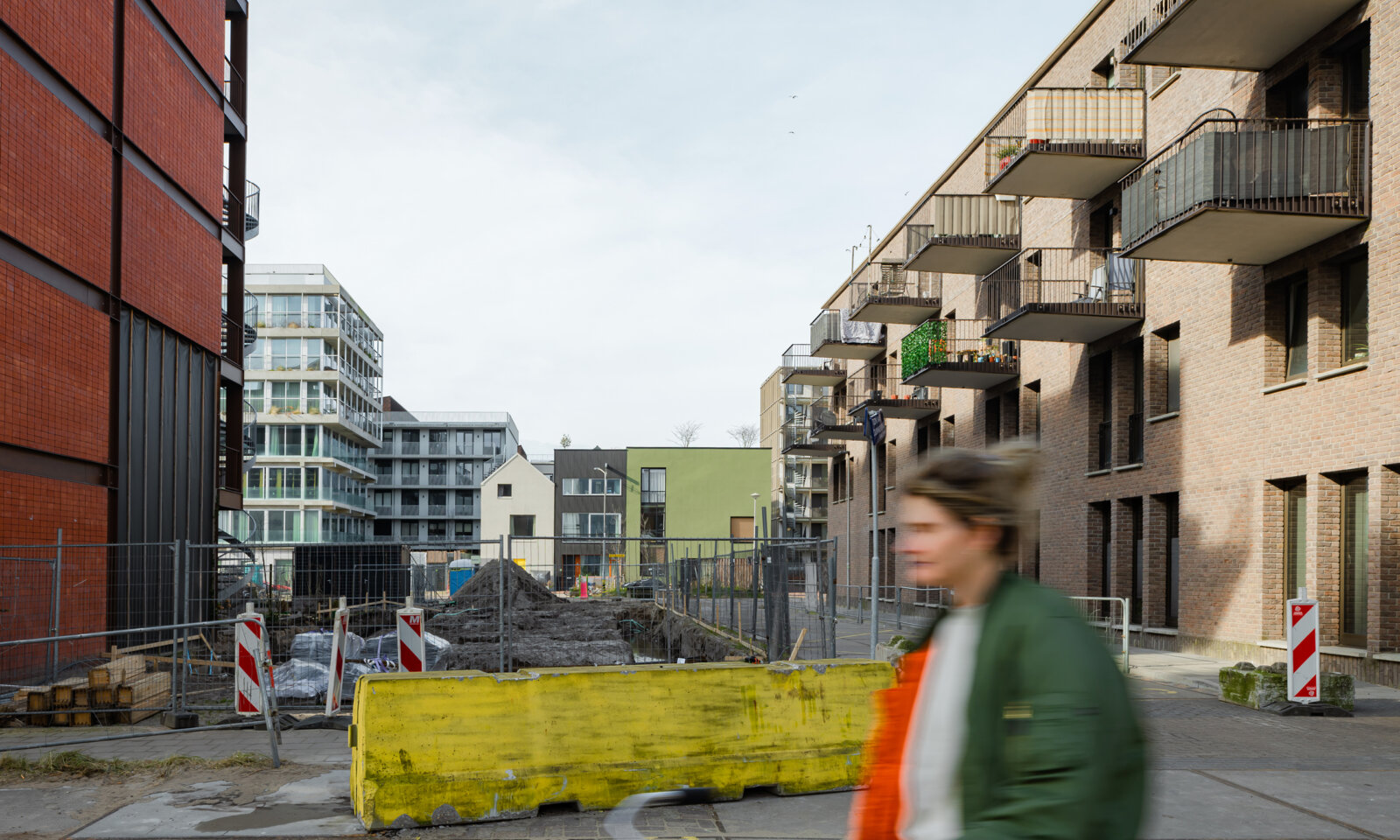
A new urban activator, a community room at the heart of the plan, is currently being added and will be available for the neighbourhood to use for their own activities.

Resilience: unlike traditional urban plans with fixed outcomes, Cityplot Buiksloterham will evolve to meet the shifting needs and desires of the community.
This smaller-scale layout promotes residents to actively shape their district, with its mixed nature fostering an ongoing dialogue between architecture and participants, between functions and economy.
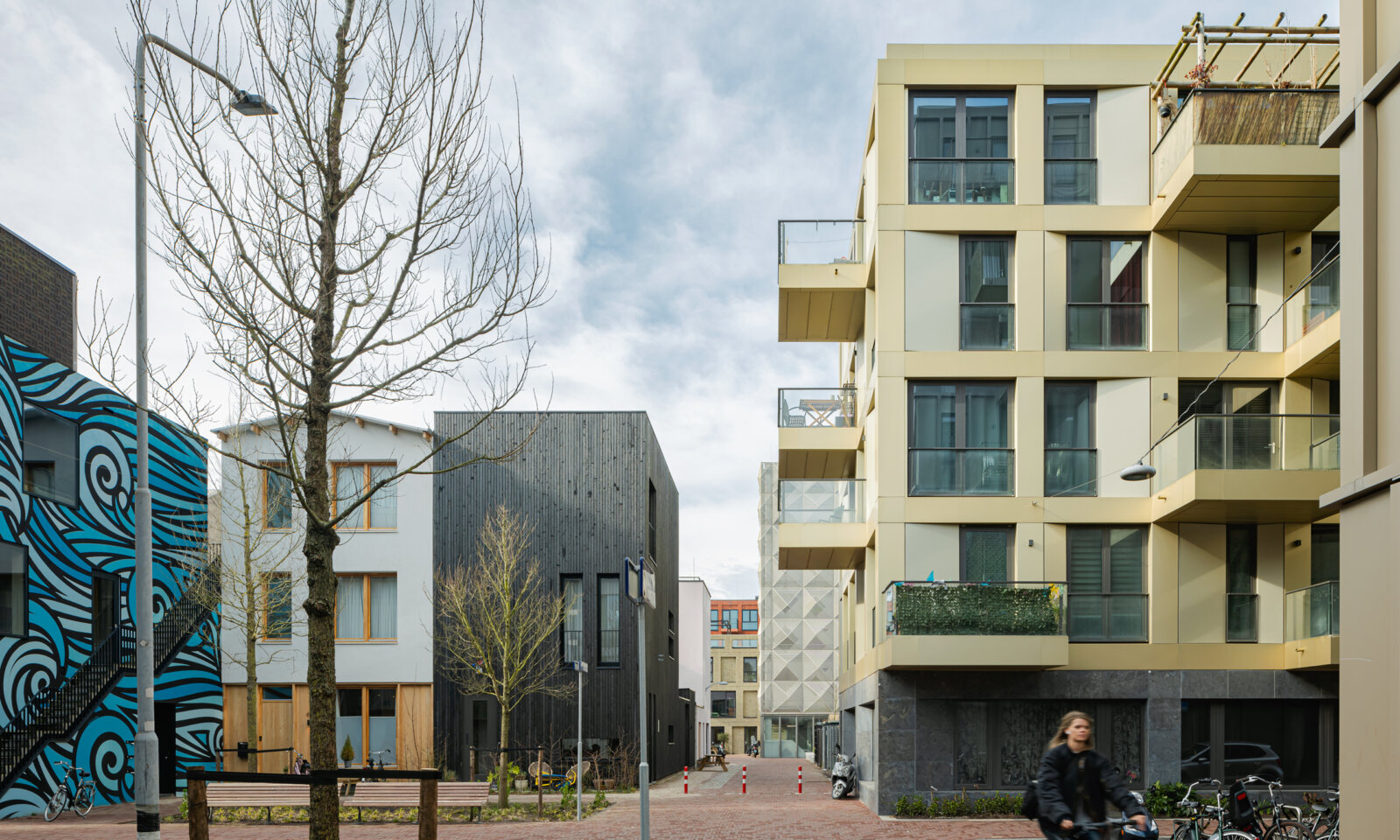
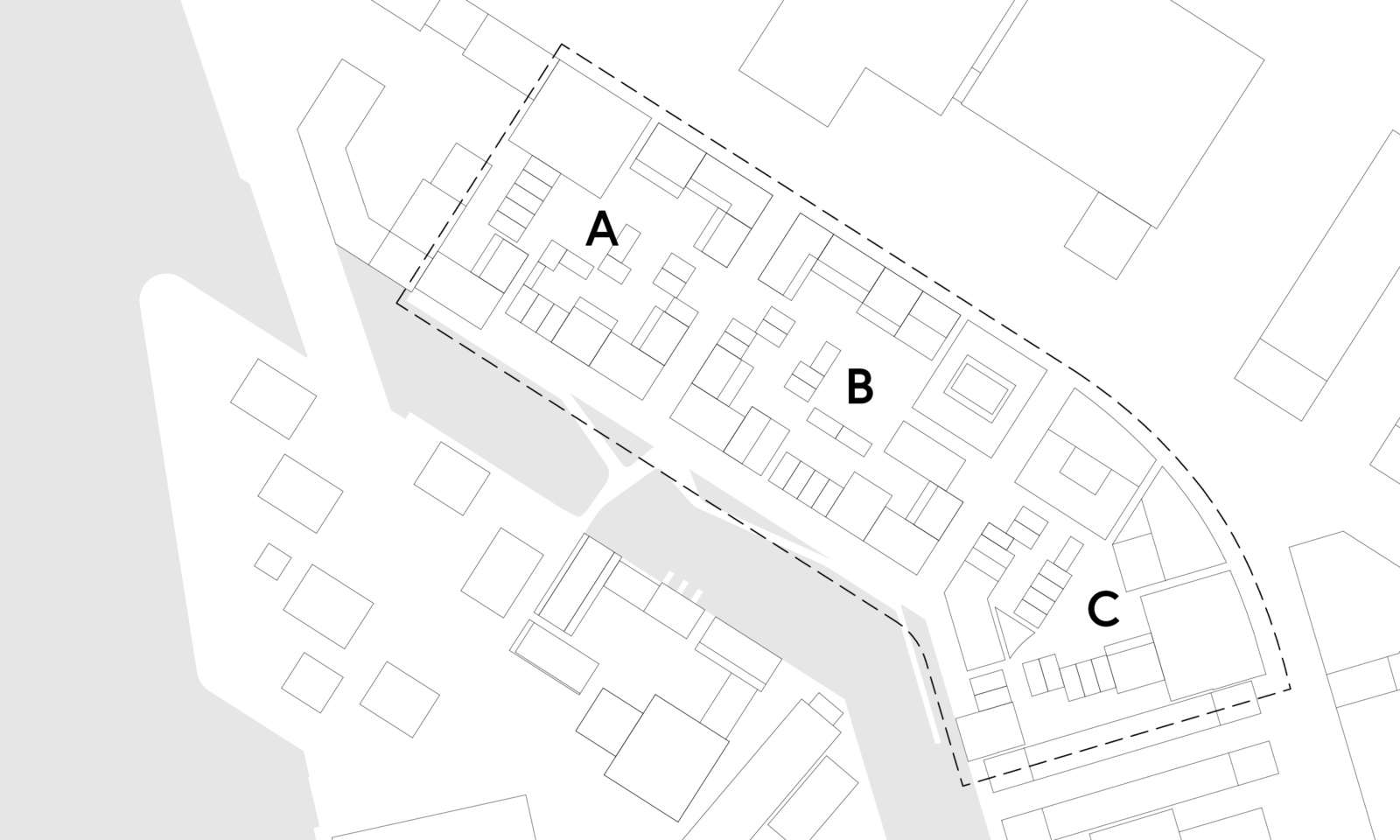
Cityplot Buiksloterham is an evolution of our ‘Cityplot’ concept, with which we also transform other former industrial and harbour areas into sustainable city districts. From our analysis for the Cityplot concept, the 100×100-metre plot emerged as the ideal building block size. This generous dimension provides enough space for the very diverse mix of typologies while ensuring accessibility both from the street and from the core. Cityplot Buiksloterham consists of three of these compact plots side by side: Plot A, B and C.
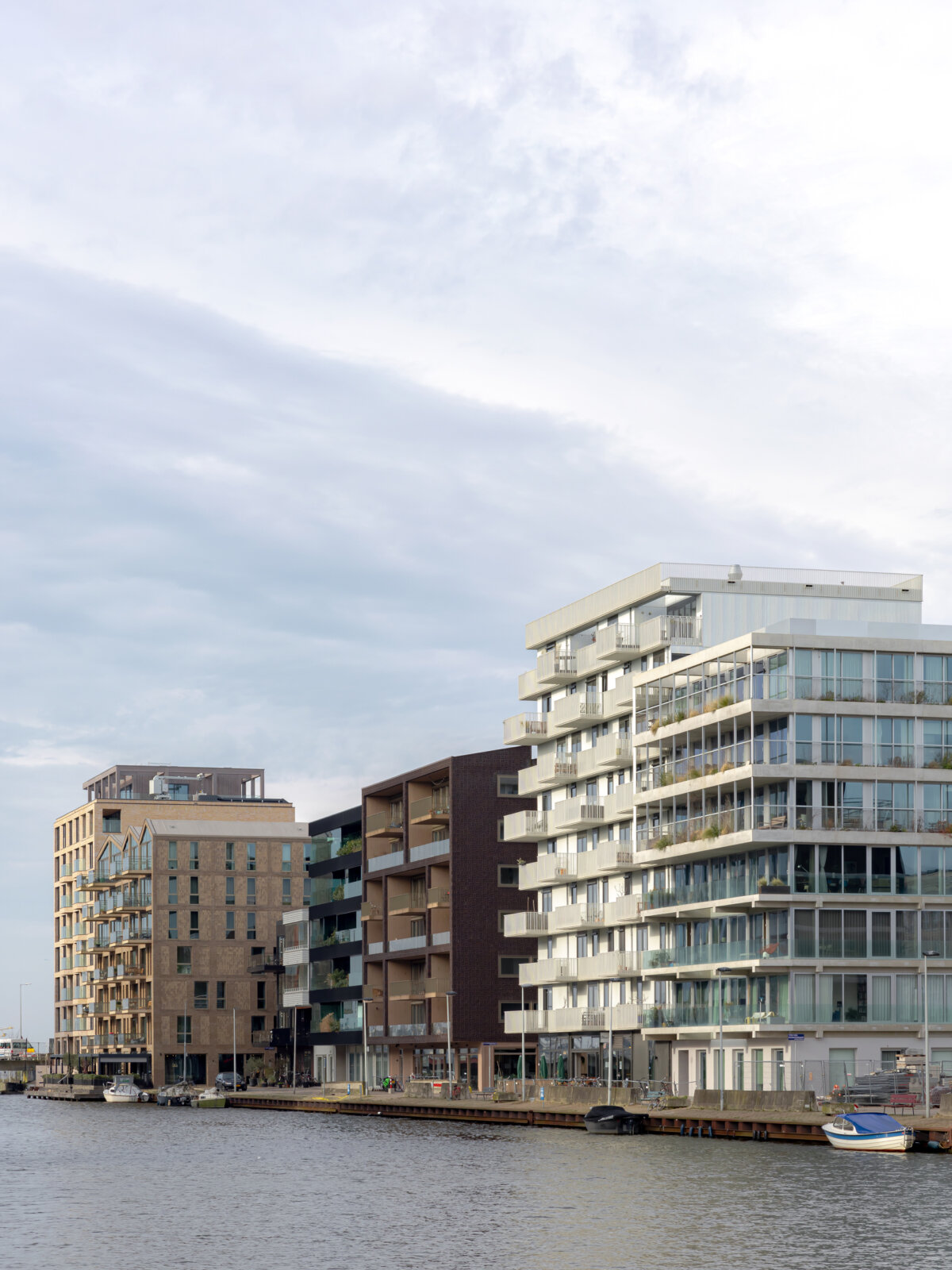
We prescribed that all buildings should express their own unitary architectural language, which actually creates greater variety among the buildings, giving neighbourhood its powerful identity.
Public, semi-public, collective and private outdoor spaces alternate at various levels throughout the plan. At ground level, we have added open-ground gardens and large trees, which contribute to creating the circular city.
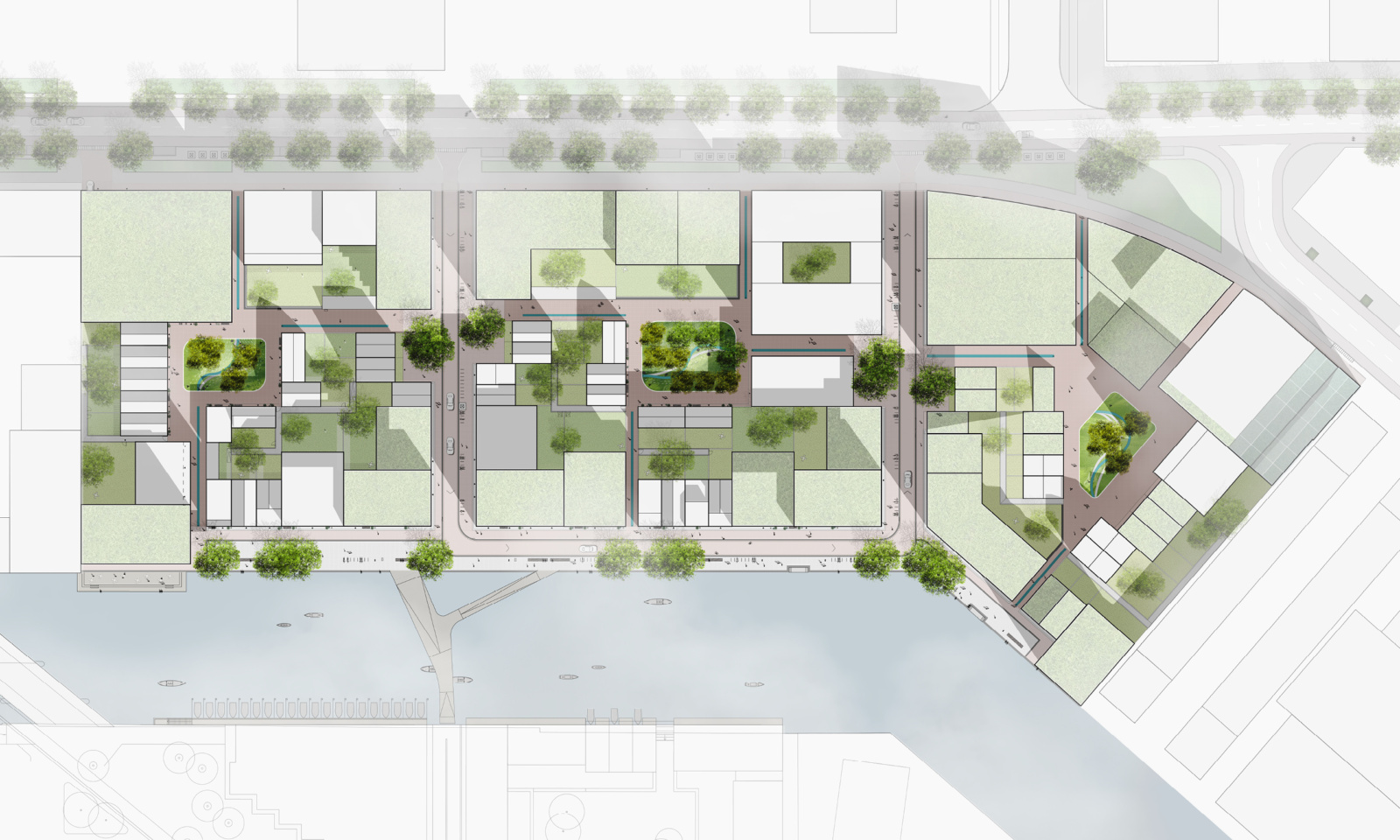
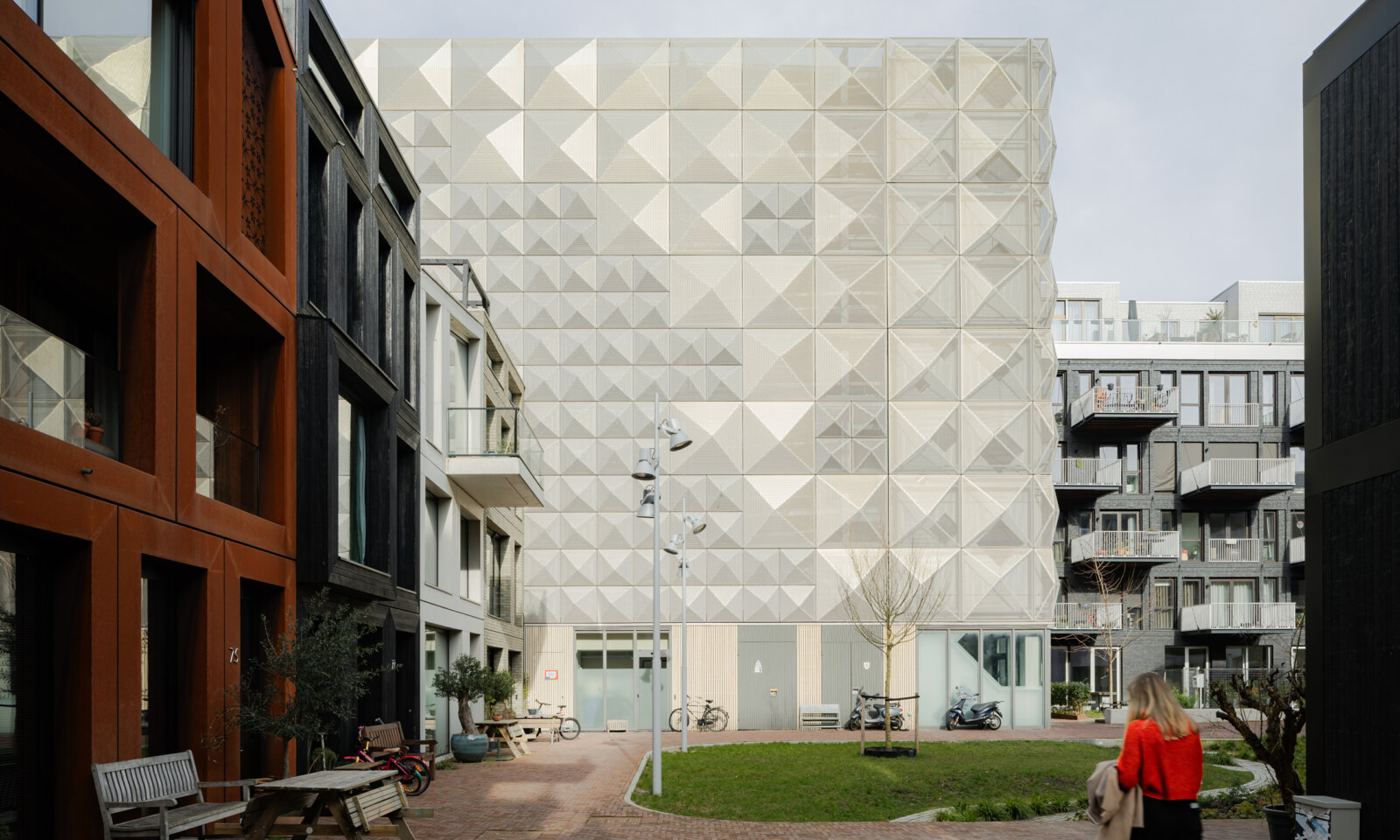
Throughout the area, a route leads residents and visitors along green spaces, squares and walkways. At either end of this route, we introduced two buildings, designed as abstract, architectural objects. These structures provide space for centralised parking of cars and bicycles, and for energy generation. By clustering parking, we could actually keep the public space car-free and put the pedestrian at heart in the area.
From an urban experiment to a self-evolving district.
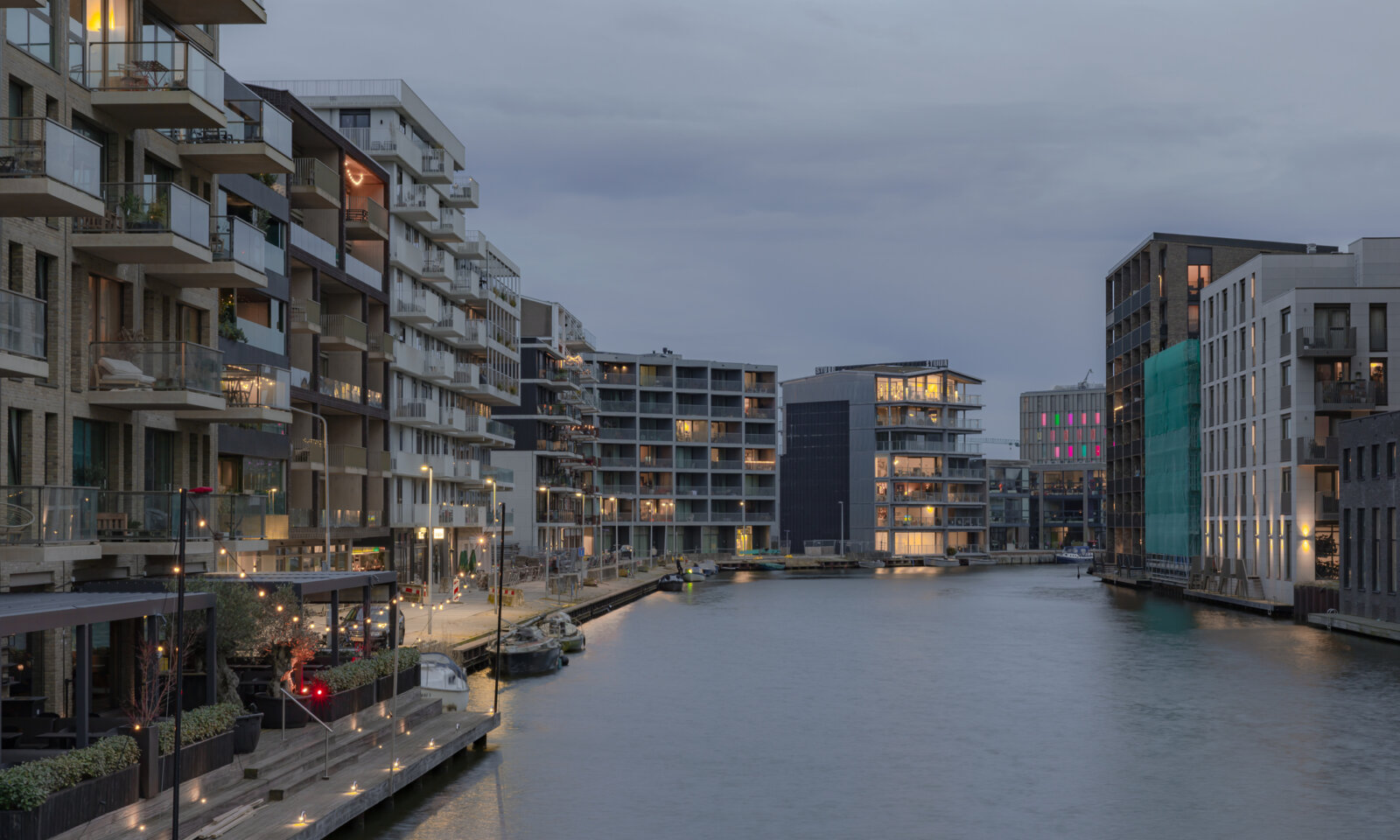
Water is a fundamental element in our design for Cityplot Buiksloterham. Tolhuiskanaal runs prominently along the area, with its quay integrated into the public space. Rainwater is collected and buffered in wadis, on roofs and in crates, after which it is drained into the canal. This helps prevent flooding and improve climate conditions. In future, the public space at the quay will be extended with walking bridges over Tolhuiskanaal, seating elements and green patches.
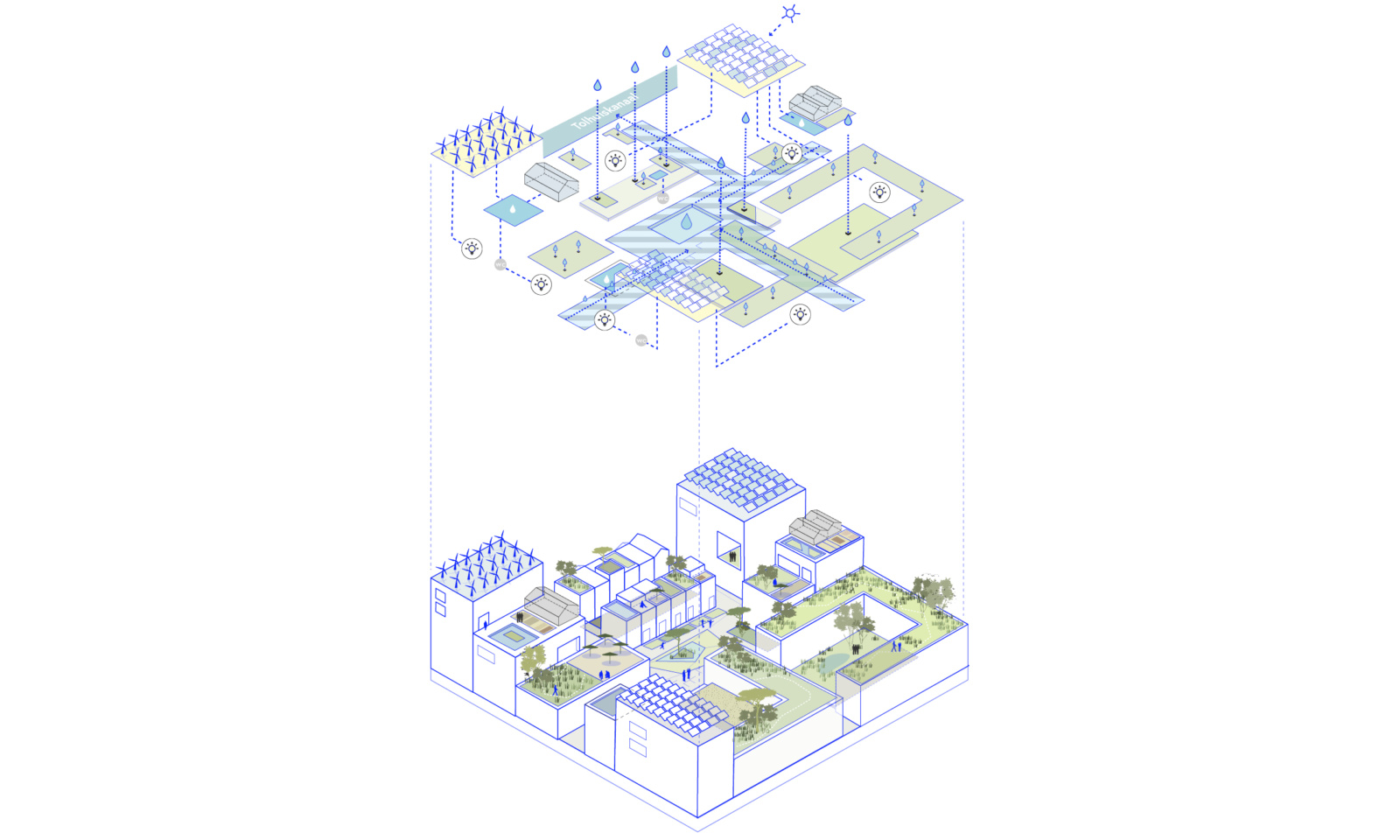
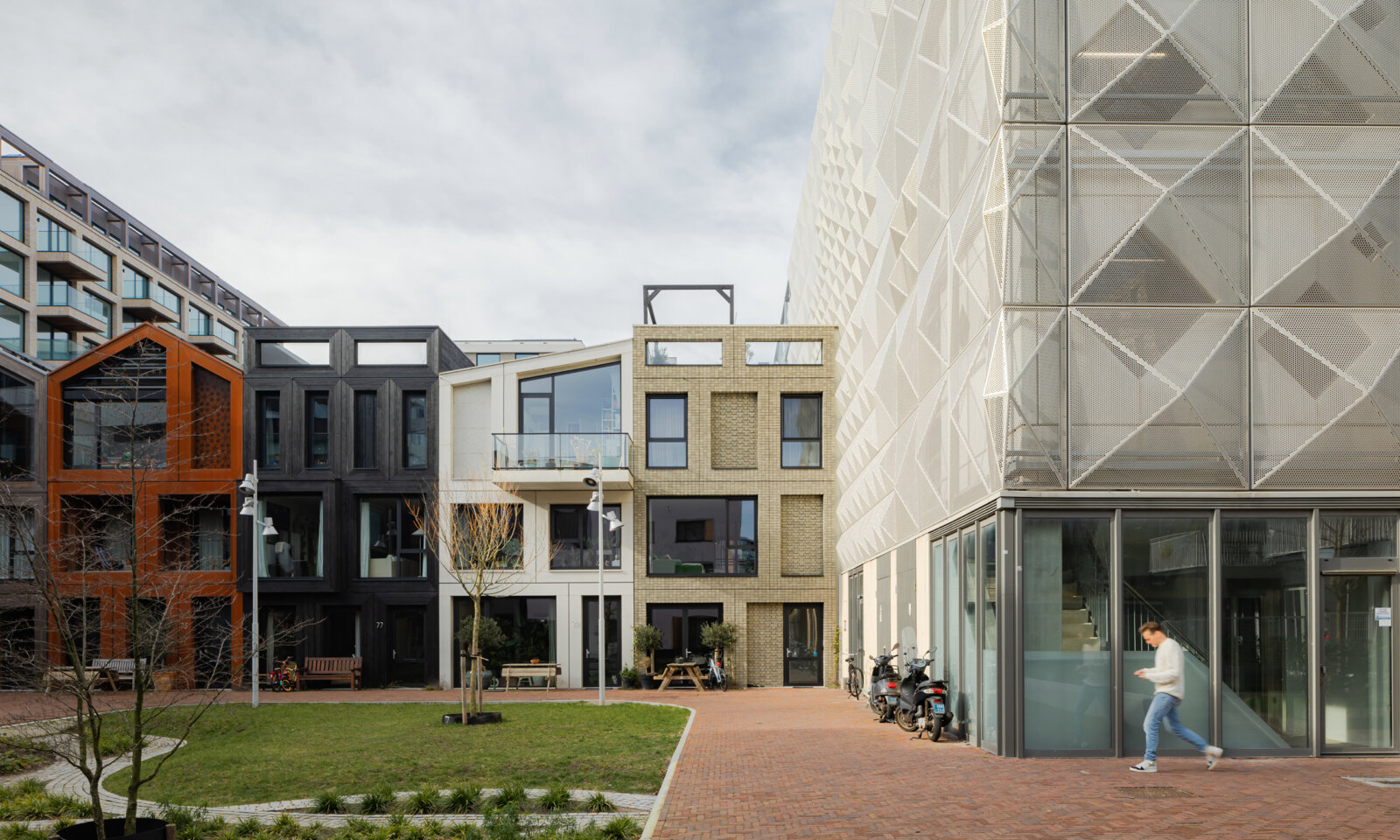
Cityplot Buiksloterham began as an experiment in urban development and has now become a vital part of Amsterdam. The ambition to adopt maximum circularity in a compact area now creates a functioning living environment, that people shape with each other.
1. Scale
2. Courtyard
3. Centralised parking
4. Urban activator
5. Green typologies
6. Walking paths
